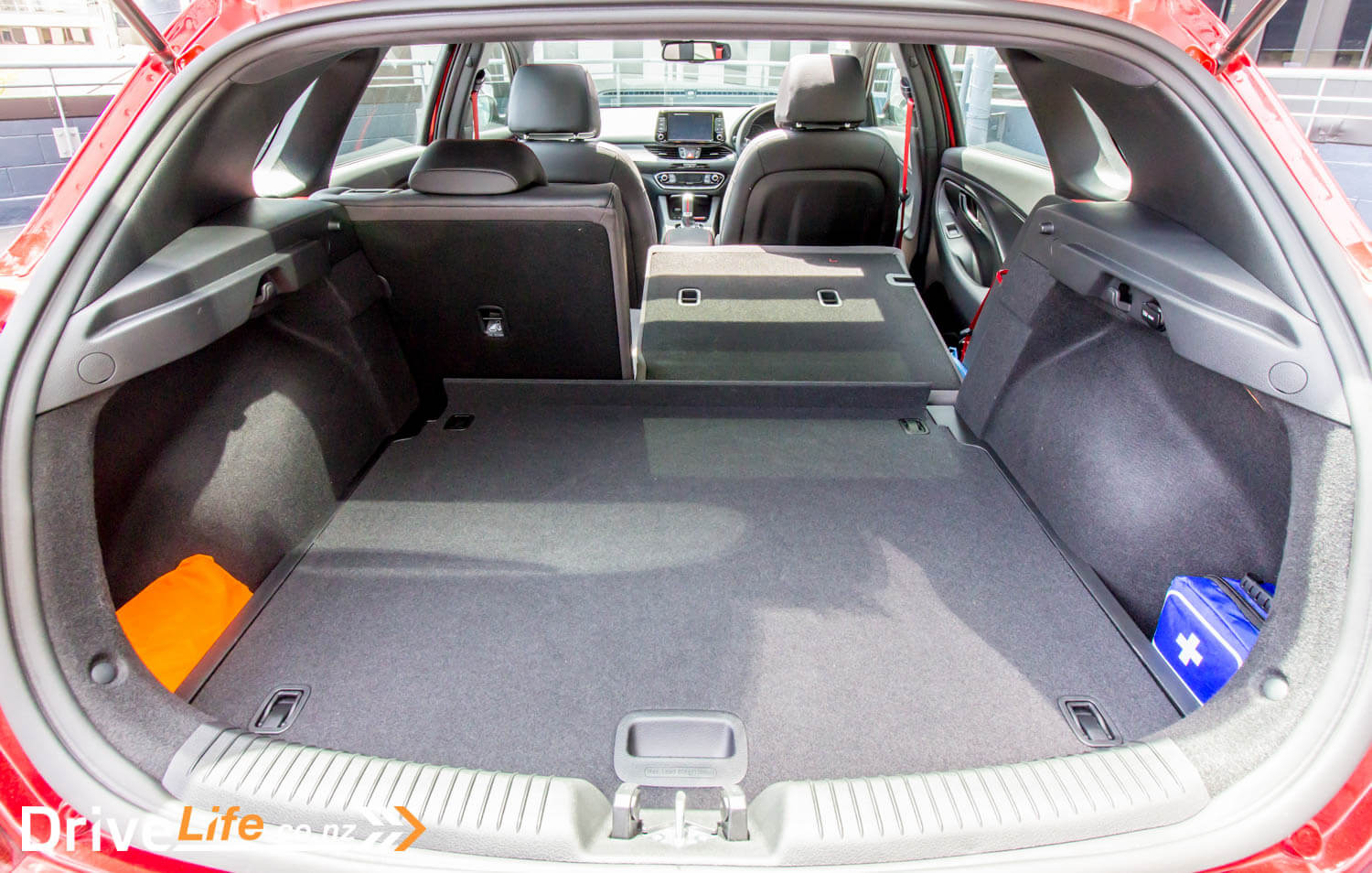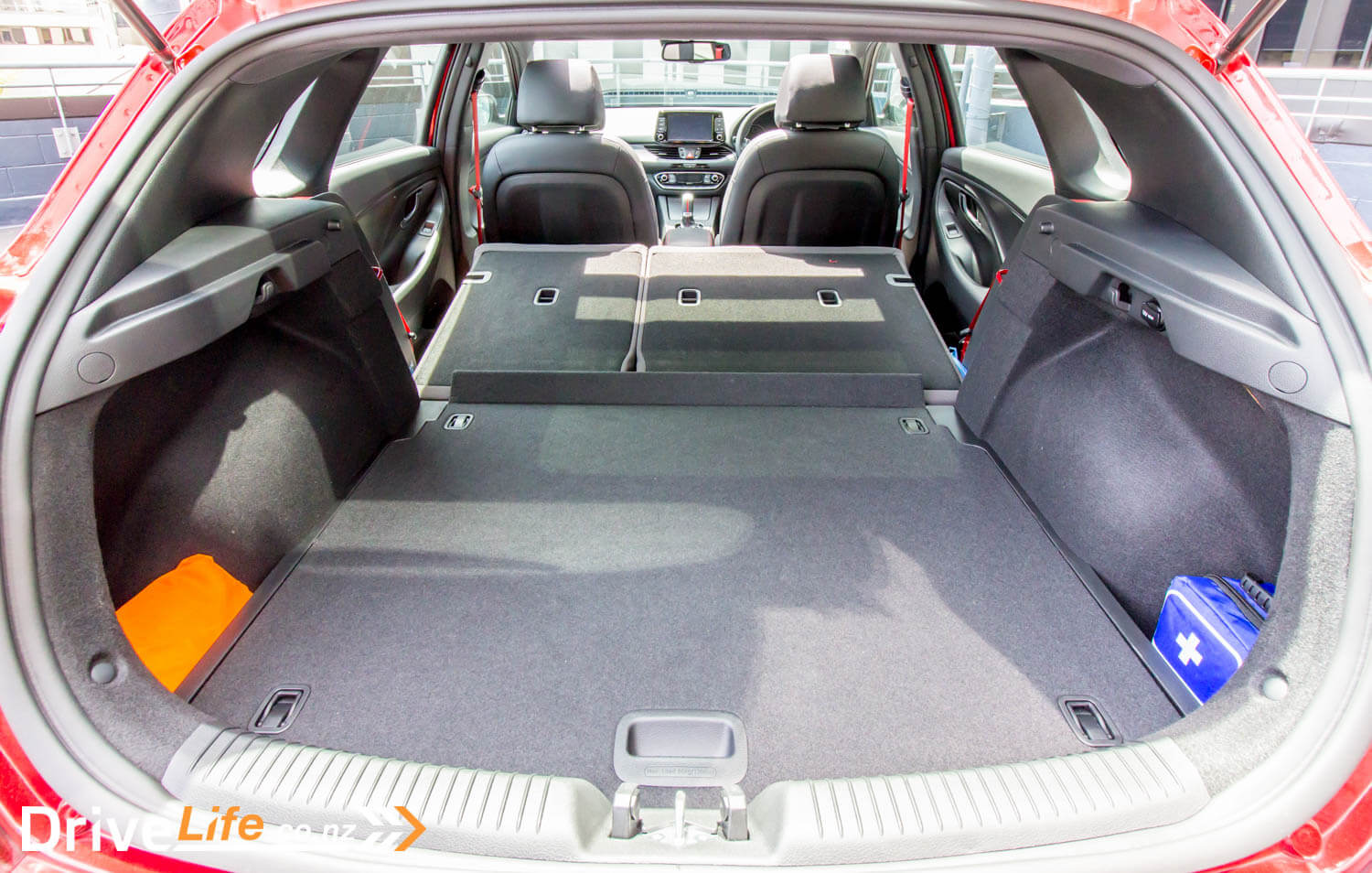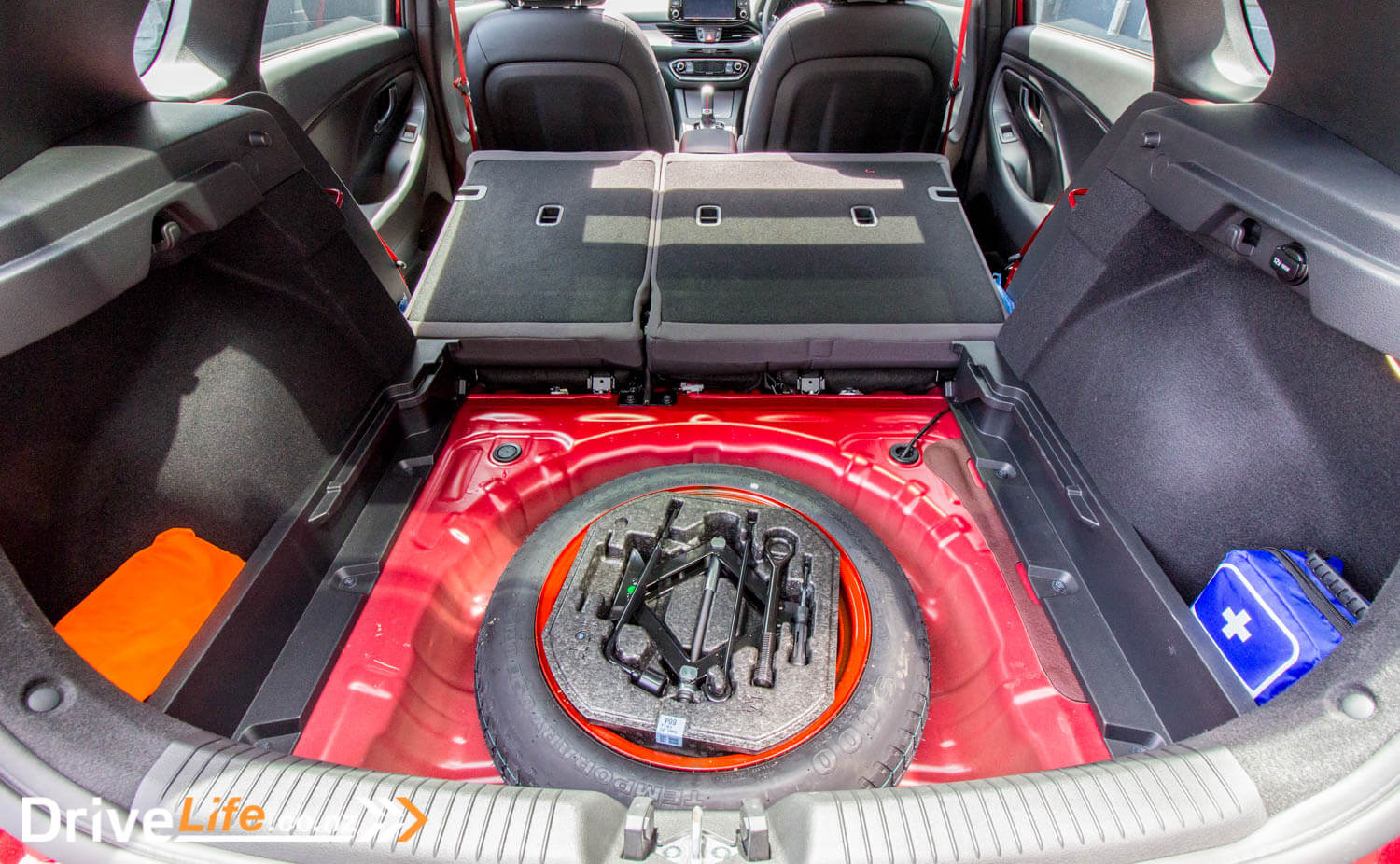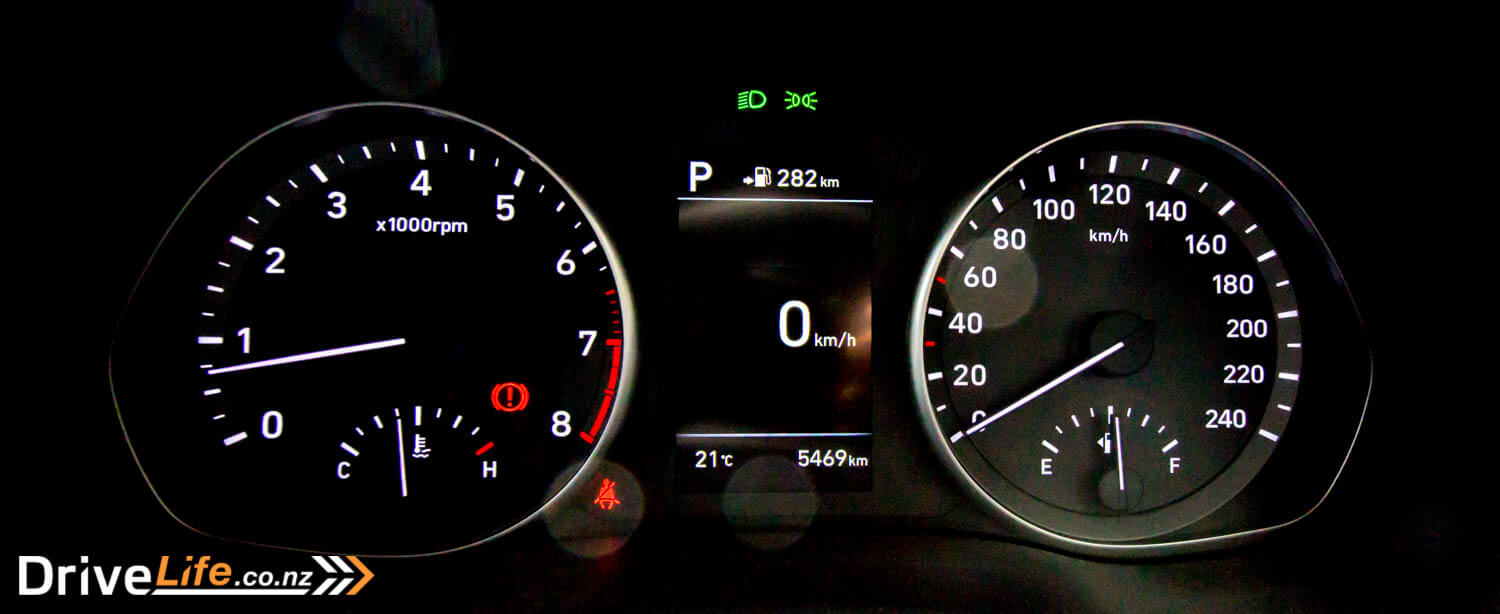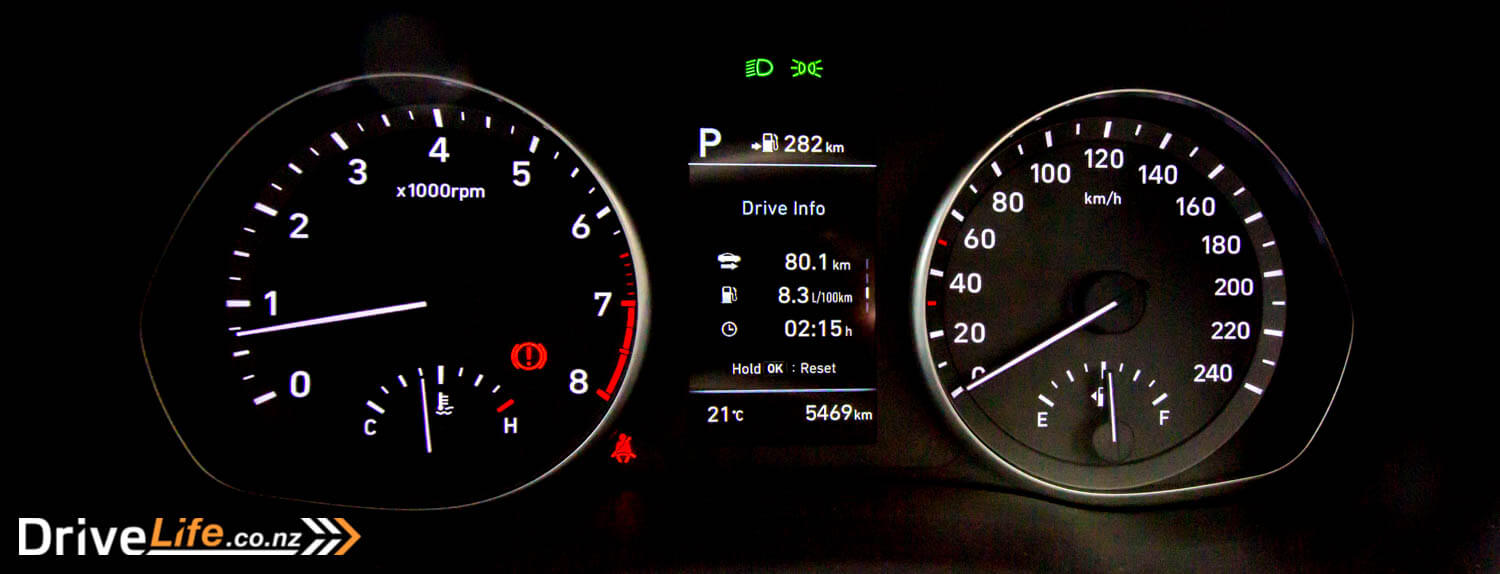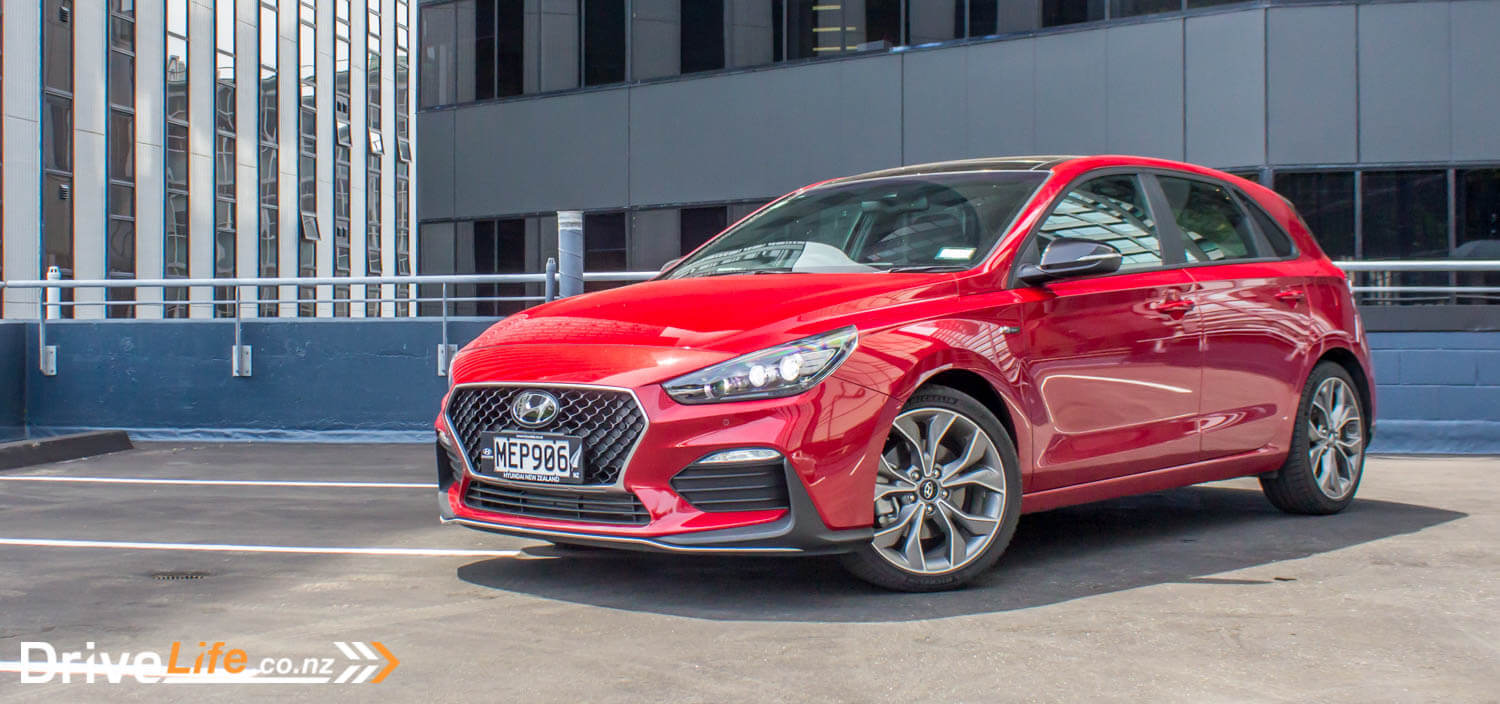We loved the Hyundai i30N when we tested it. A little raw, exciting, 202kW of power, and a manual gearbox – there wasn’t much not to love.
At $54,990, the i30N is hot on the heels of the Honda Type R, which retails at $59,990. Is there a market for a less-powered, i30N wannabe? Hyundai thinks so, and has launched the $43,990 i30N-Line. In the place of a 2-litre engine is a 150kW 1.6-litre, but still turbo of course. It’s not as outlandish in looks as the i30N, but some buyers may prefer that.
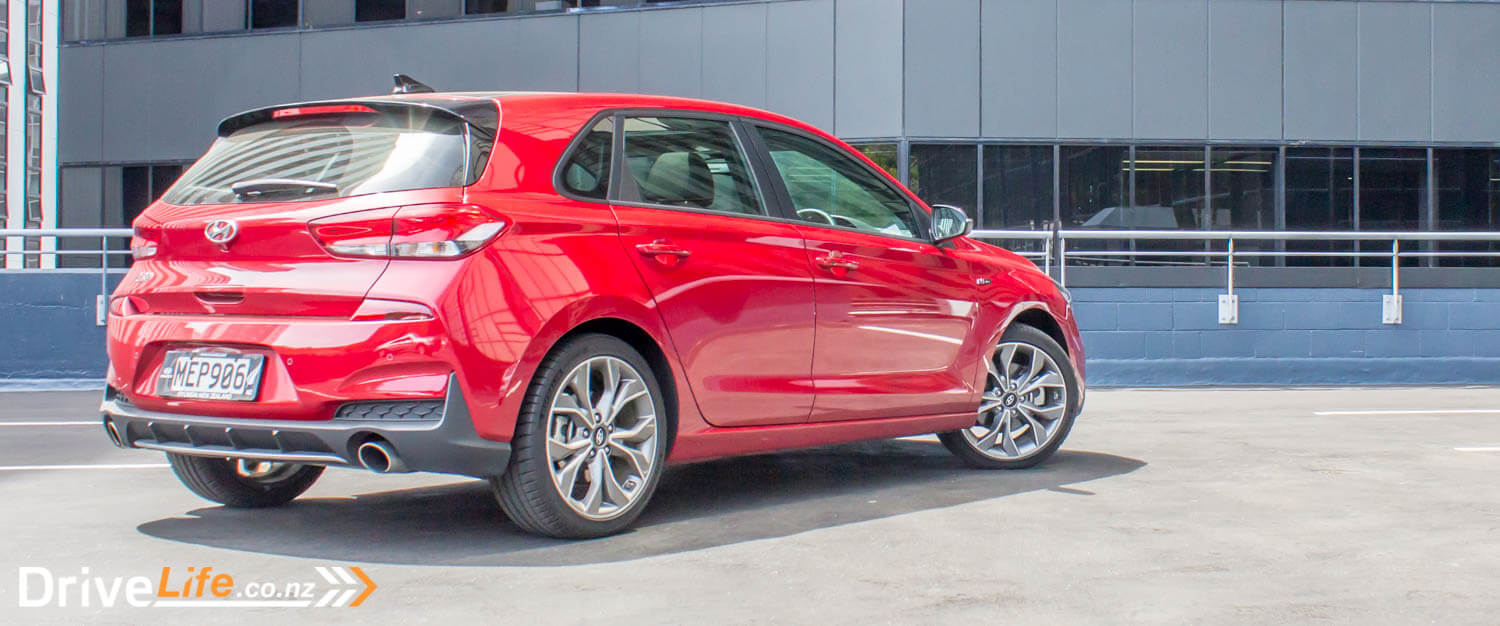
There’s another reason to look at a less powerful model – keeping your driver’s licence. With 202kW, there’s always the temptation to push the i30N hard, and drive it like you stole it. It’s just that kind of car. Perhaps that’s where the N-Line can slot in?
Will the i30N-Line take sales from that other brilliant, small sports hatch – the 103kW (but far lighter) Suzuki Swift Sport? And more importantly, can the i30N-Line keep performance and sports-hatch buyers happy, and still give you a decent grin factor?
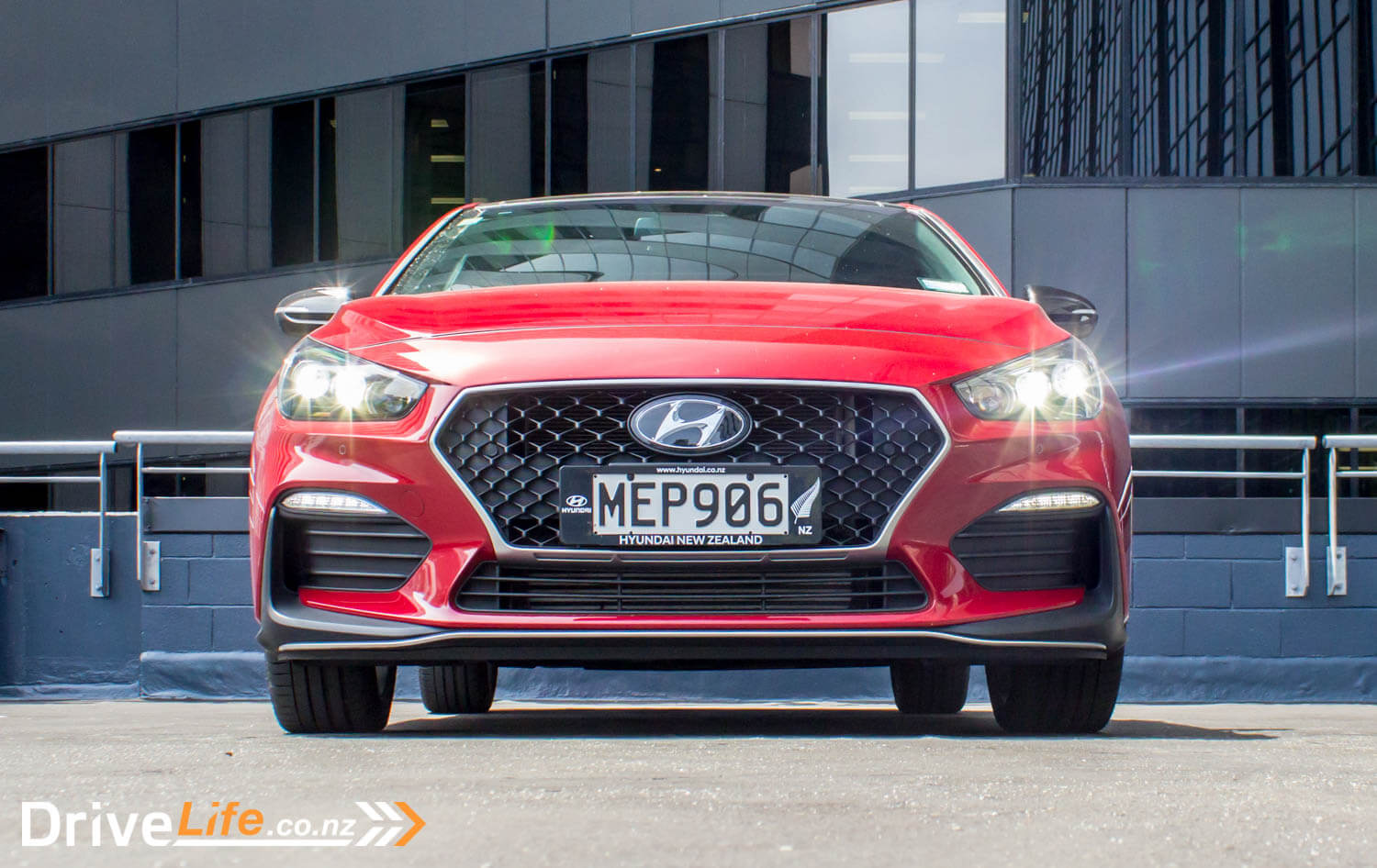
What’s In the The 2019 Hyundai i30 Range?
You can read about the range on Rob’s review of the i30 1.6 Turbo Limited here. This i30N-Line is pretty much the newer version of that car.
Externally, the i30 N-Line gets aggressive front and rear bumpers inspired by the existing i30 model, along with 18-inch alloy wheels equipped with performance-based Michelin Pilot Sport 4 tyres and ‘N-Line’ badging. The interior, meanwhile, gets model-specific front sports seats with carbon-look trim, sports steering wheel, sports gear knob, red highlights (including seatbelts), along with a black headliner.
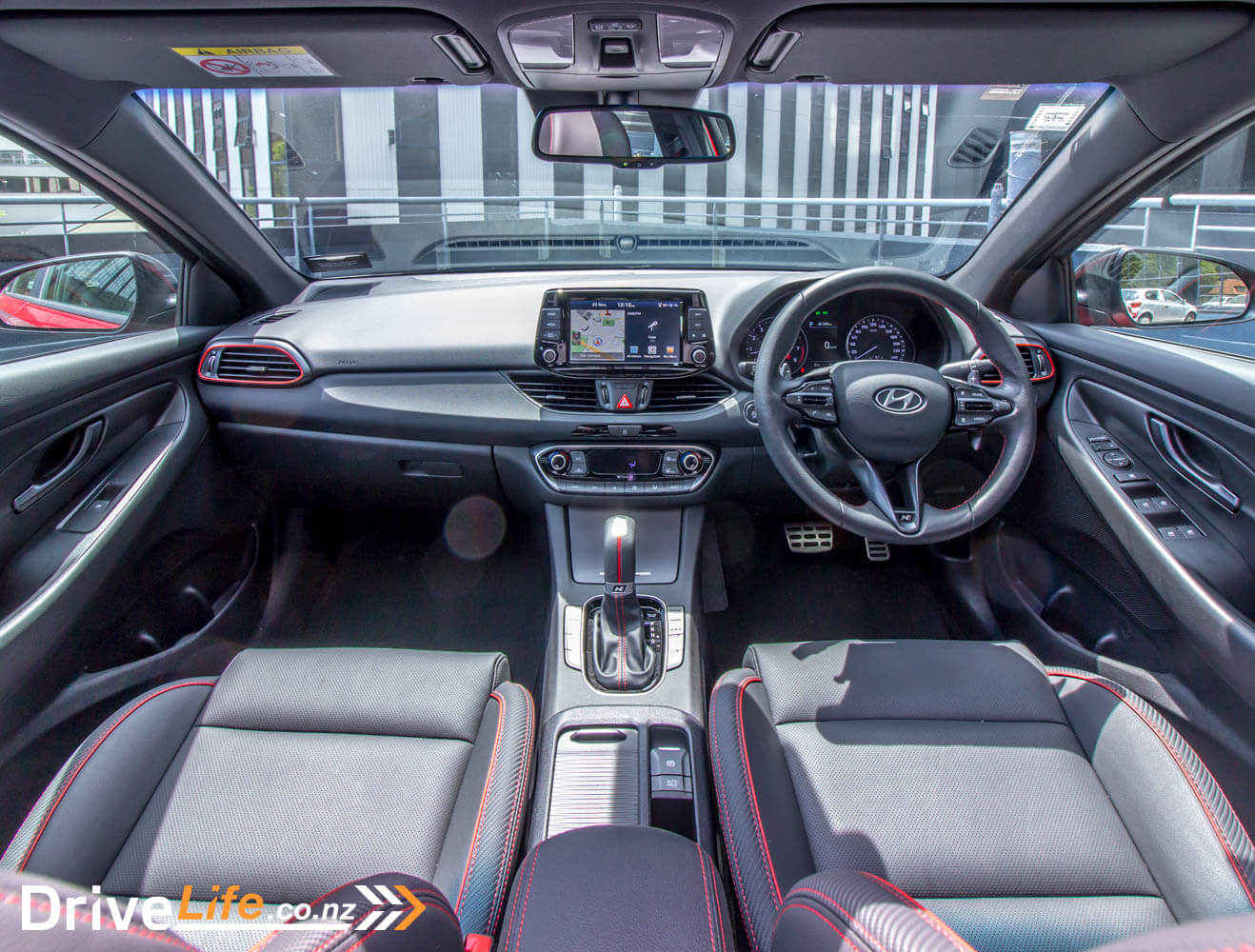
Under the skin, the N-Line model features a unique sports suspension tune compared to existing i30 models. Remaining specification is very similar to the i30 Limited and includes features like a panoramic sunroof, heated and ventilated front seats, and an 8” touchscreen with satellite navigation.
Other standard equipment for this model is adaptive cruise control.
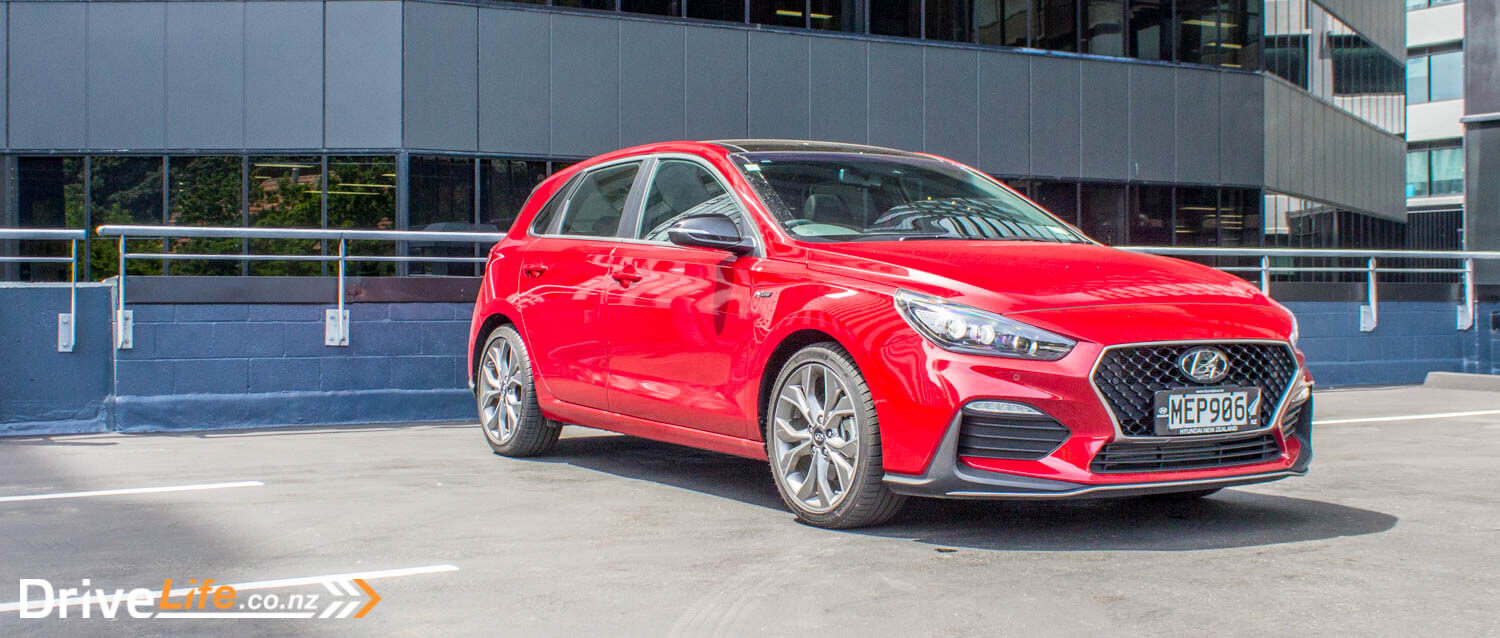
Hyundai’s Connected Car Service ‘AutoLink Premium’ is also compatible with the i30 N-Line which provides an overview of vehicle data, including real-time diagnostics, tyre pressure monitoring, driving history statistics, parking management, easy service booking, automatic access to roadside assistance and remote vehicle functions.
There’s no manual option for the i30N-Line – standard is a 7-speed DSG gearbox. The engine is a 1.6-litre, four-cylinder turbo-petrol motor, which manages 150kW of power, and 265Nm of torque, delivered between a very usable 1,500-4,500rpm.
You can read more about the i30N-Line on Hyundai New Zealand’s website.
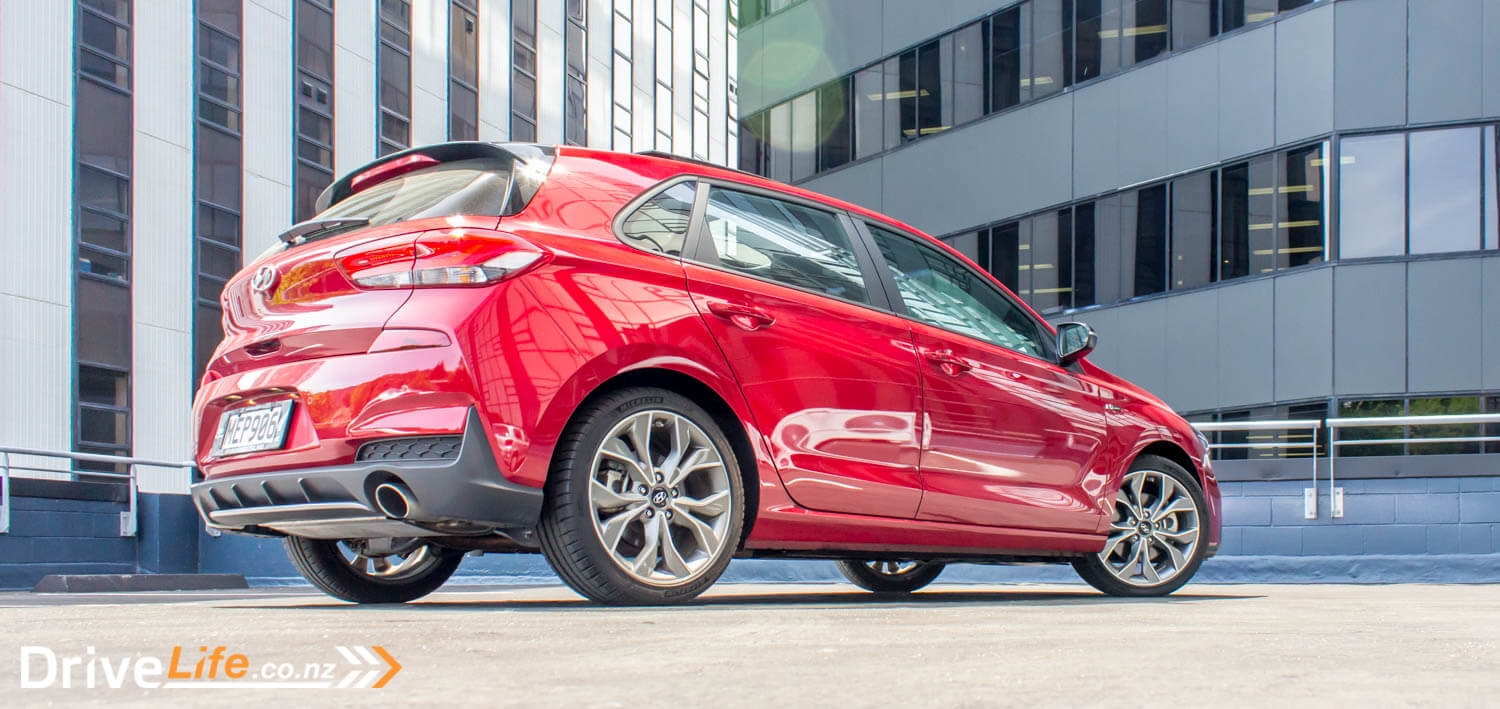
First Impressions Of The 2019 Hyundai i30N-Line
I’m not 100% sure how Hyundai has done it, as the N-Line looks so much like an i30, but so different at the same time. It’s more aggressive, and those N-Line wheels set the car off beautifully. They almost look too big for the car, but the reality is they are spot-on.
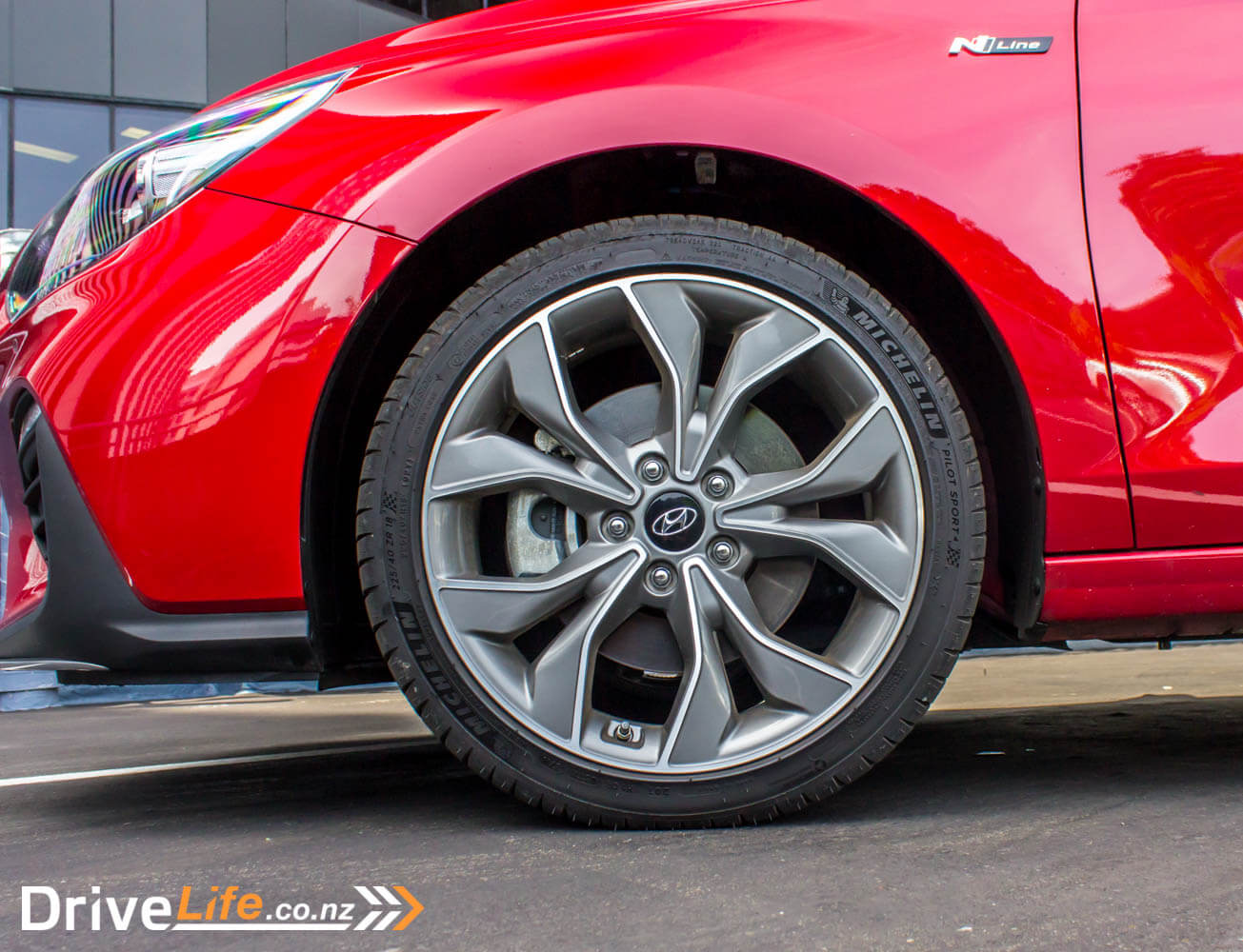
Our car was finished in Fiery Red, and that made it all the better. There’s something about this shape in that colour, that nails the whole design.
Not as extroverted as the i30N, sure, but still a great looking car from any angle.
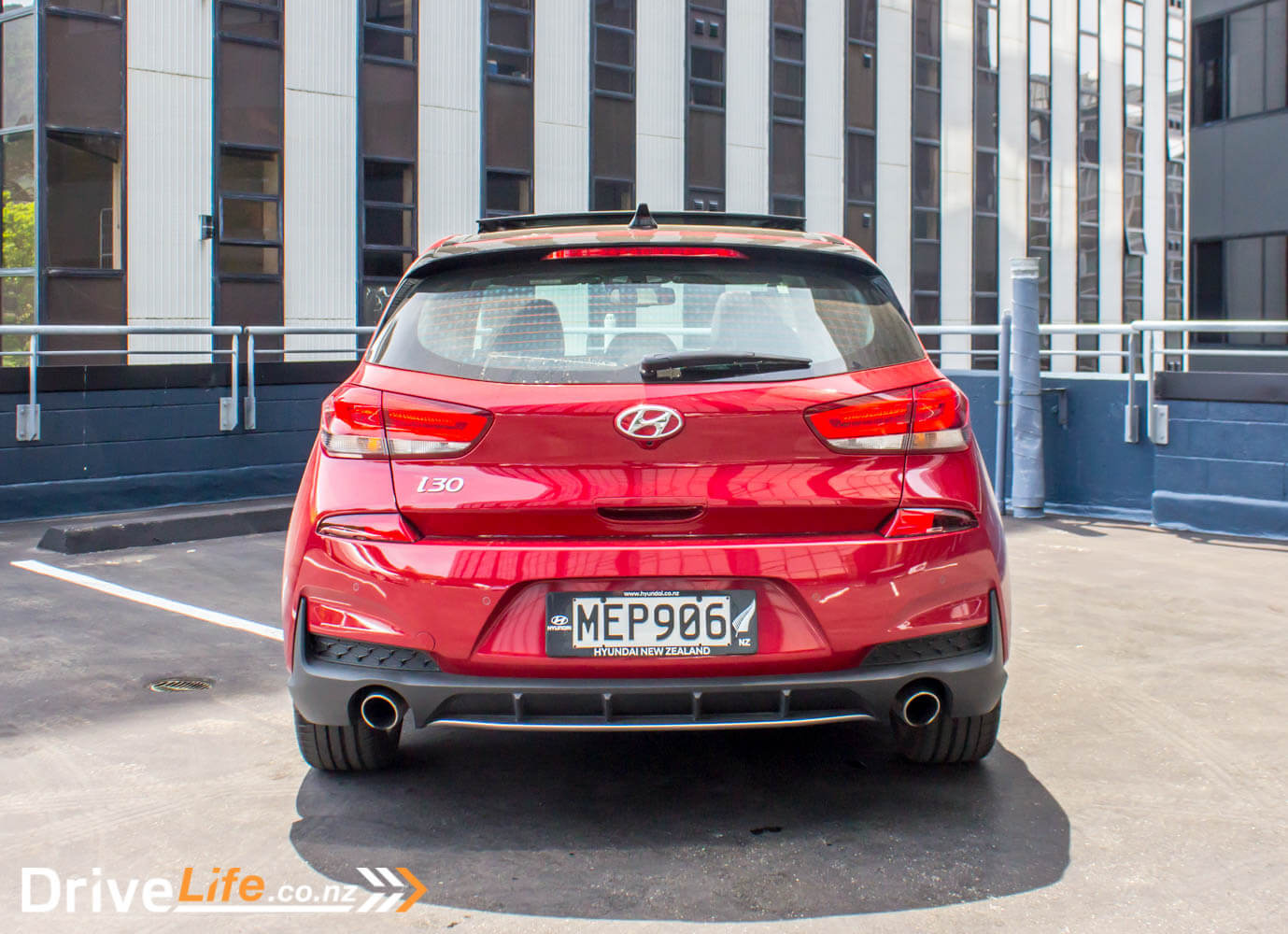
What’s The Inside Like On A 2019 Hyundai i30N-Line?
It’s much the same on the inside – less extroverted than the i30N. You still get red seat belts, alloy pedals, but the only other slightly racy feature is the red stitching on the steering wheel, gear shift gaiter, seats, and console.
In saying that, there’s some almost-classy red anodised front vent surrounds and the single rear one that catches your eye.
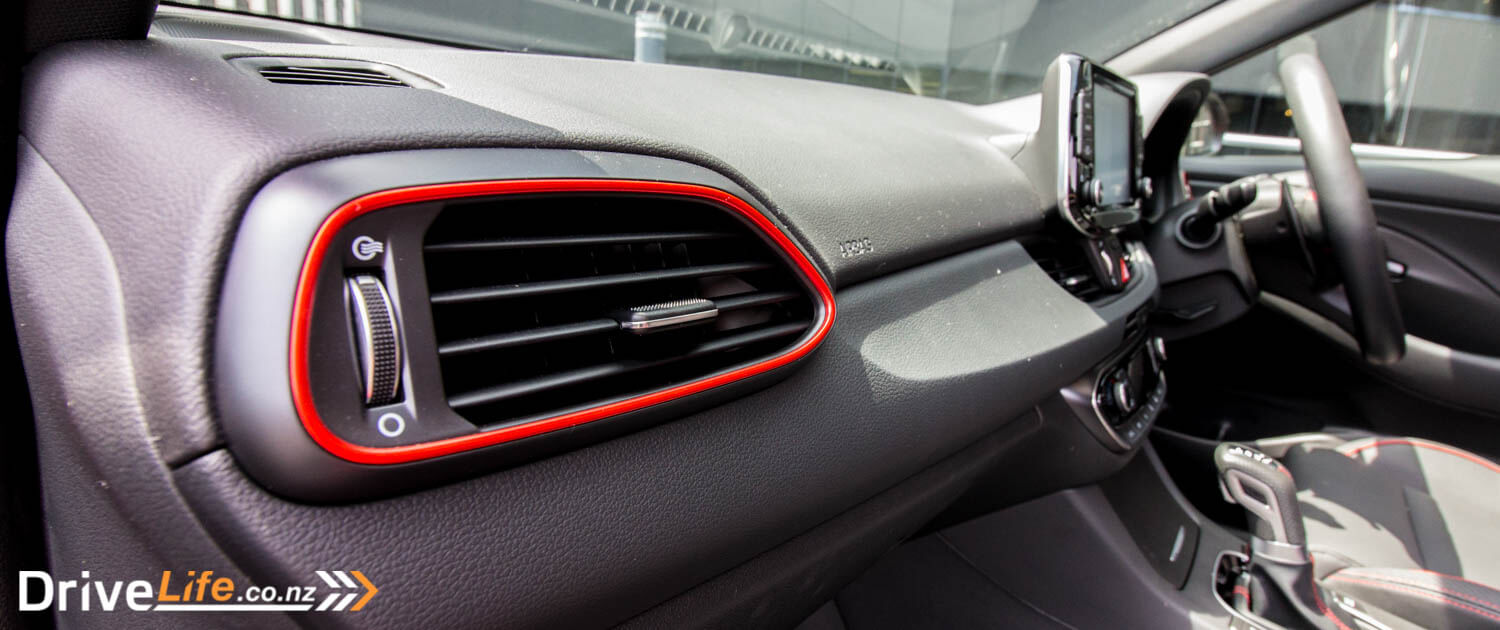
Unfortunately, sitting in the driver’s seat, your hands fall to lots of flat, black plastic. It seems to be everywhere, but luckily it’s mostly the red stitching that catches your eyes instead. The gear shifter also goes for a racy design, with a funky red line running down it. It’s all very tasteful, and not in your face like the i30N or Type R.
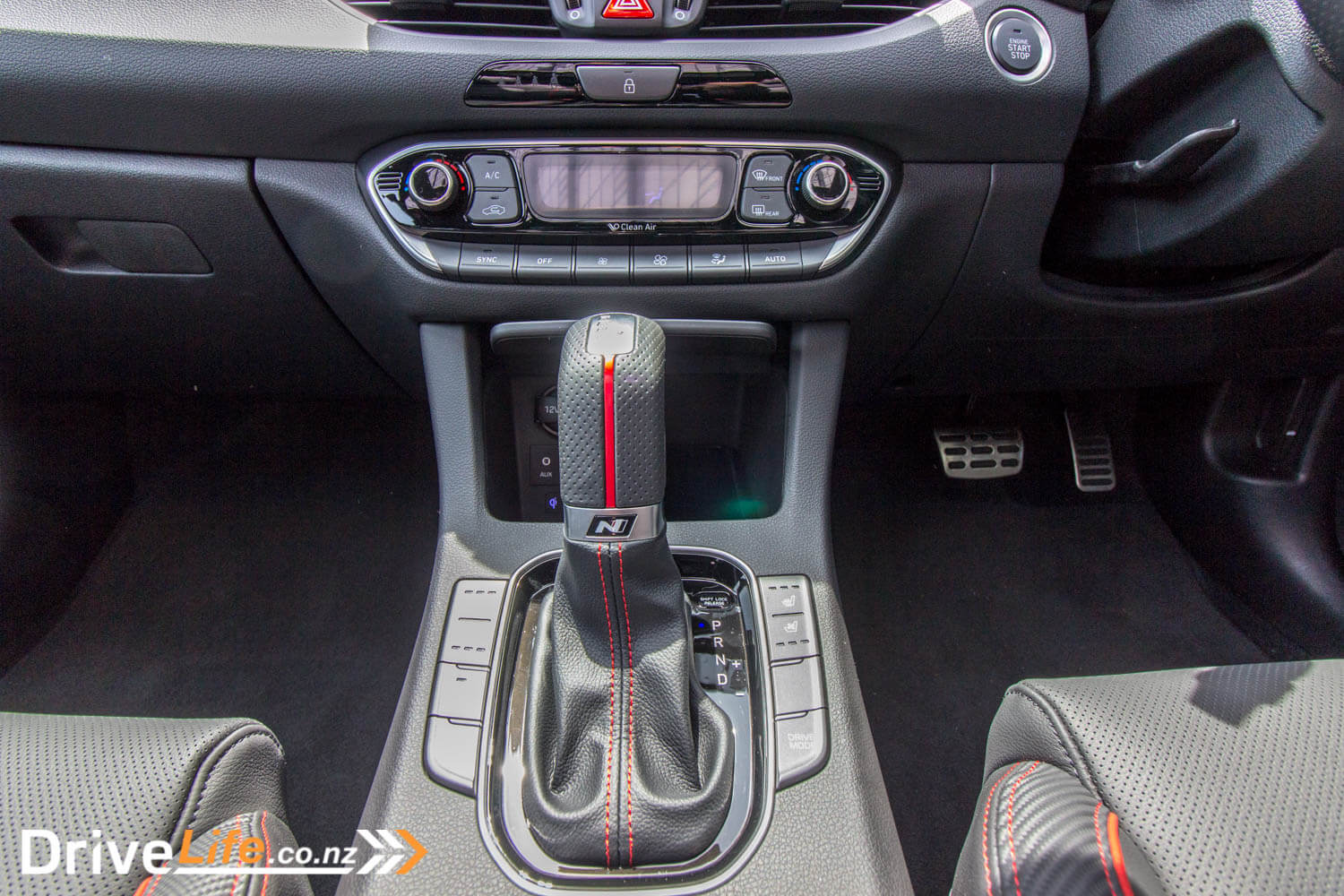
Our test car had black headlining, but thankfully the i30N-Line comes with a huge panoramic sunroof complete with an electric blind, making the interior a much more pleasant place.
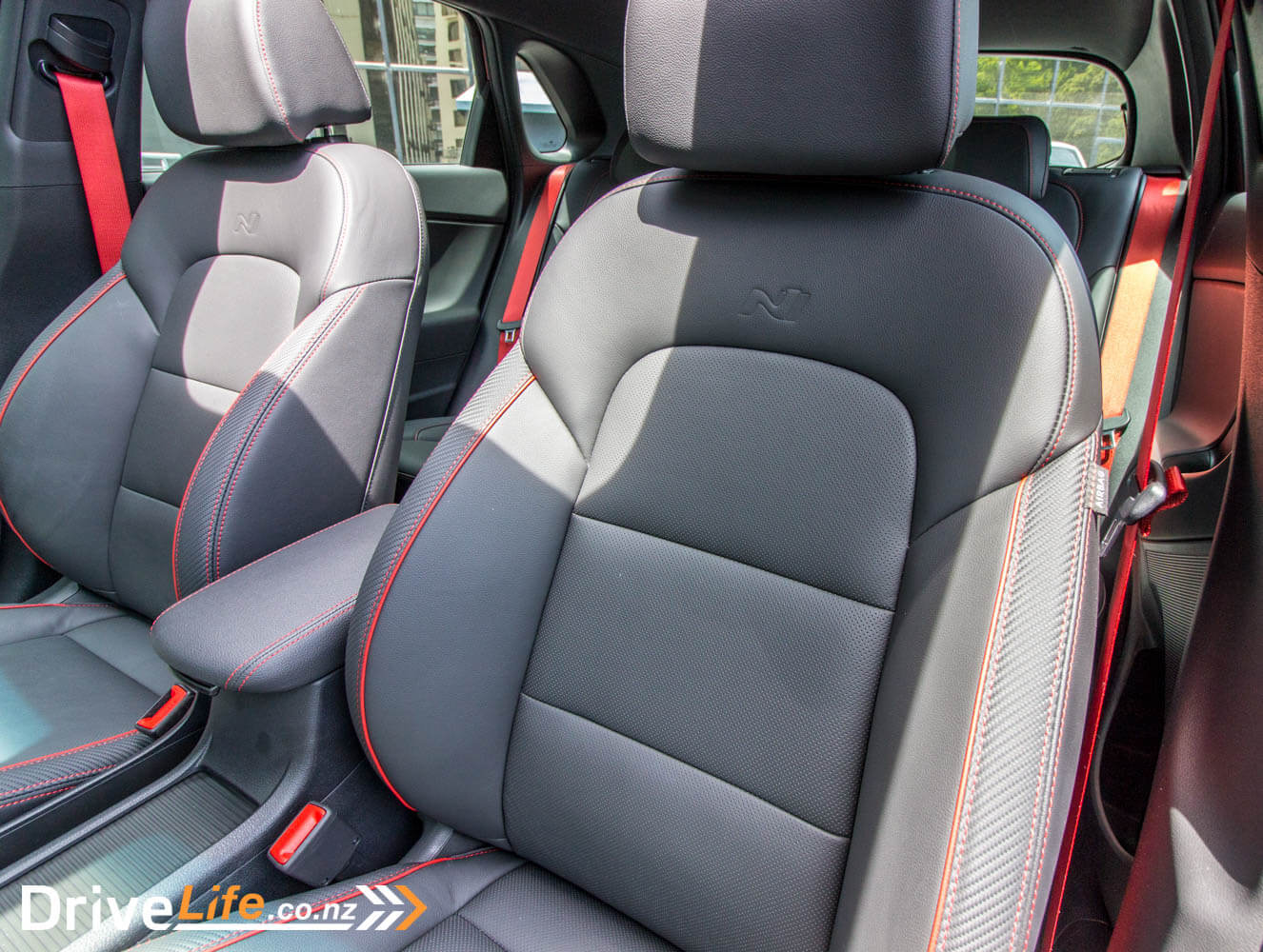
Rear legroom is surprisingly generous. Actually, the whole car feels bigger than it really is, probably due to that huge sunroof.
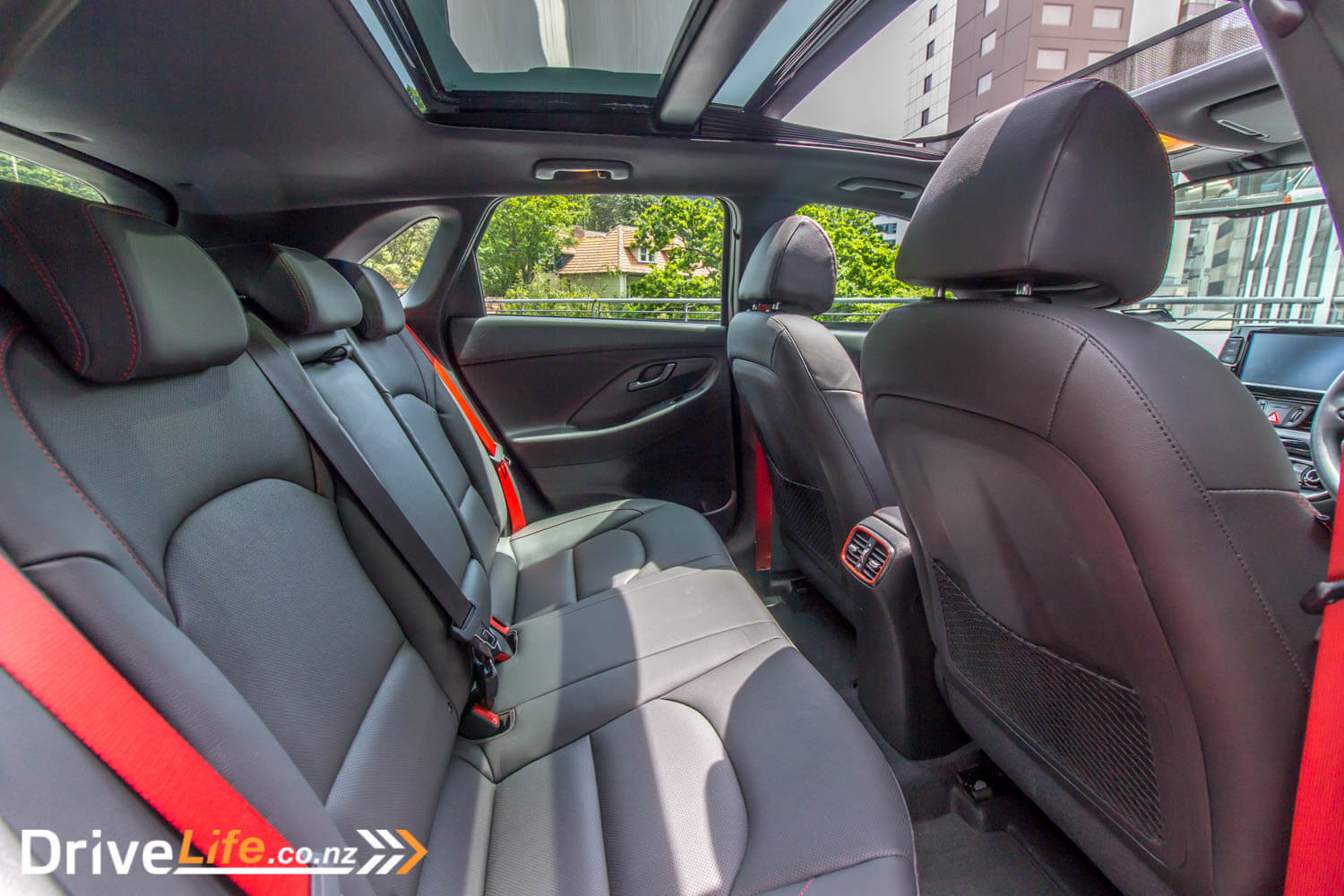
The boot is standard i30, so that means plenty of space at 395 litres with the rear seats up. Under the floor you’ll find a space-saver spare. It’s always nice to see in the boot of a Hyundai, as there is a high-vis vest and a first aid kit included.
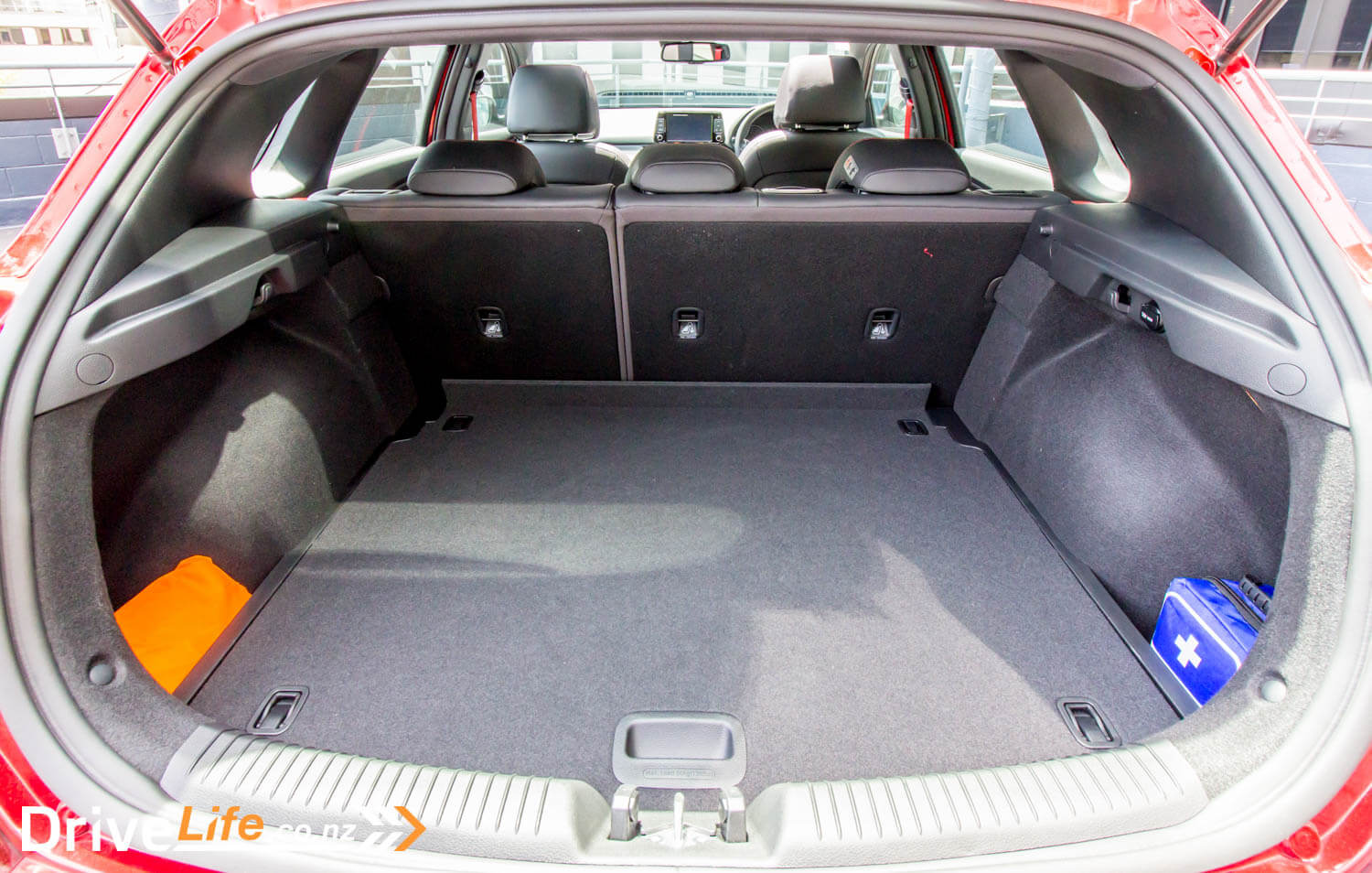
What Does The 2019 Hyundai i30N-Line Drive Like?
As soon as I drove off, I could tell this was a refined engine. Then you put your foot down a bit, and the car lurches forward. Yes, 150kW in such a small car can move it quickly. It’s no i30N, but it can still pull. And pull it does, with 265Nm of torque, it’s not so much the power that’s hauling you around as the dollops of torque available from just 1,500rpm.
Admittedly, the engine doesn’t have much character, simply sounding like a four-cylinder Korean motor, and that’s pretty much it. A shame, as I was starting to feel this is a worthy alternative to the i30N. But still, it’s early days in the car.
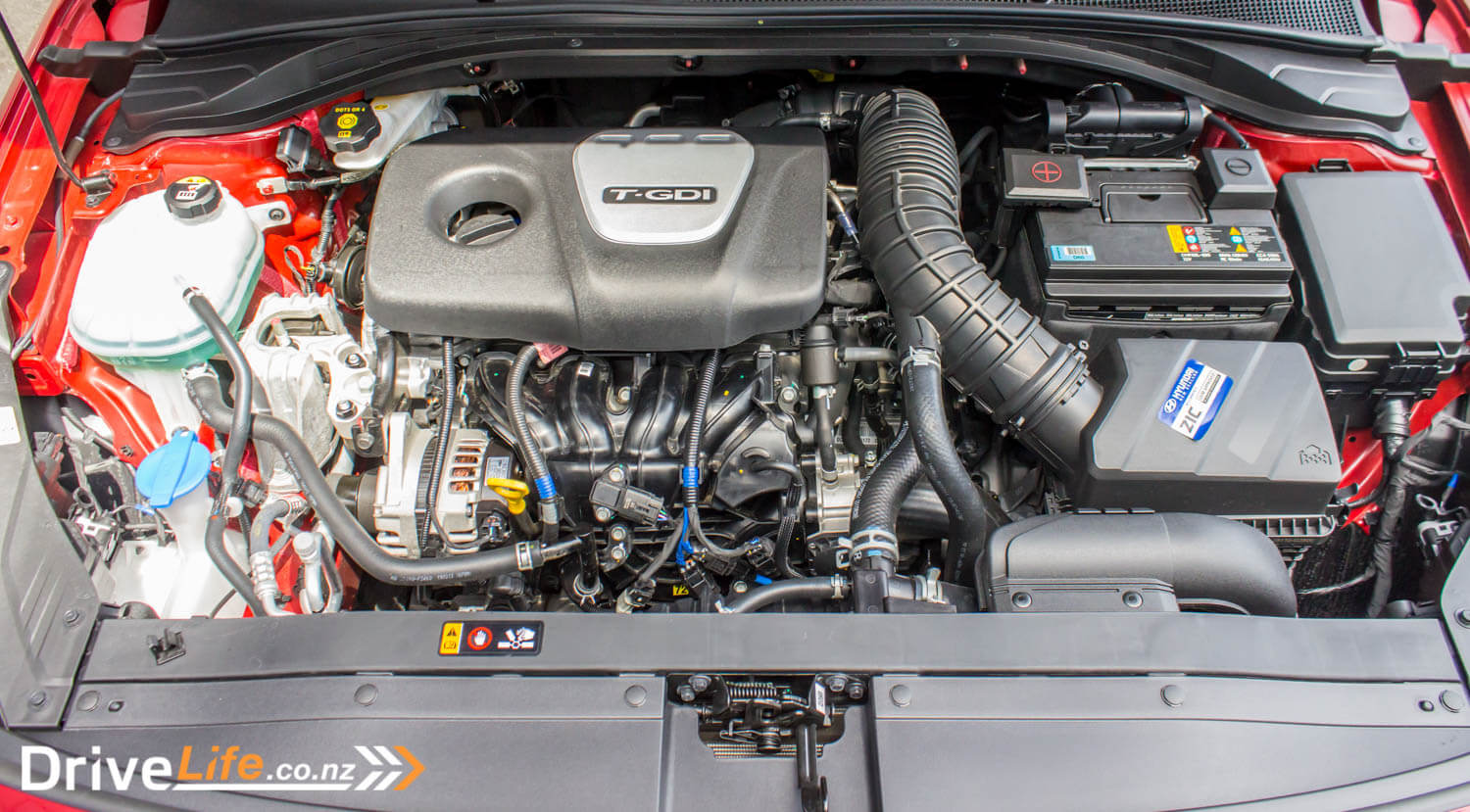
Looking around, I’m struck by how well equipped the N-Line is. This is a small hatchback, and yet there’s Qi wireless phone charging, SatNav, heated and cooled front seats, and adaptive cruise control – not to mention that huge panoramic sunroof.
Up front, there’s a 12-volt socket next to the Qi wireless charging, as well as a single USB and AUX port. At the rear of the centre console, there’s a small cubby that will just fit an SLR camera, and there’s another 12-volt socket in there too.
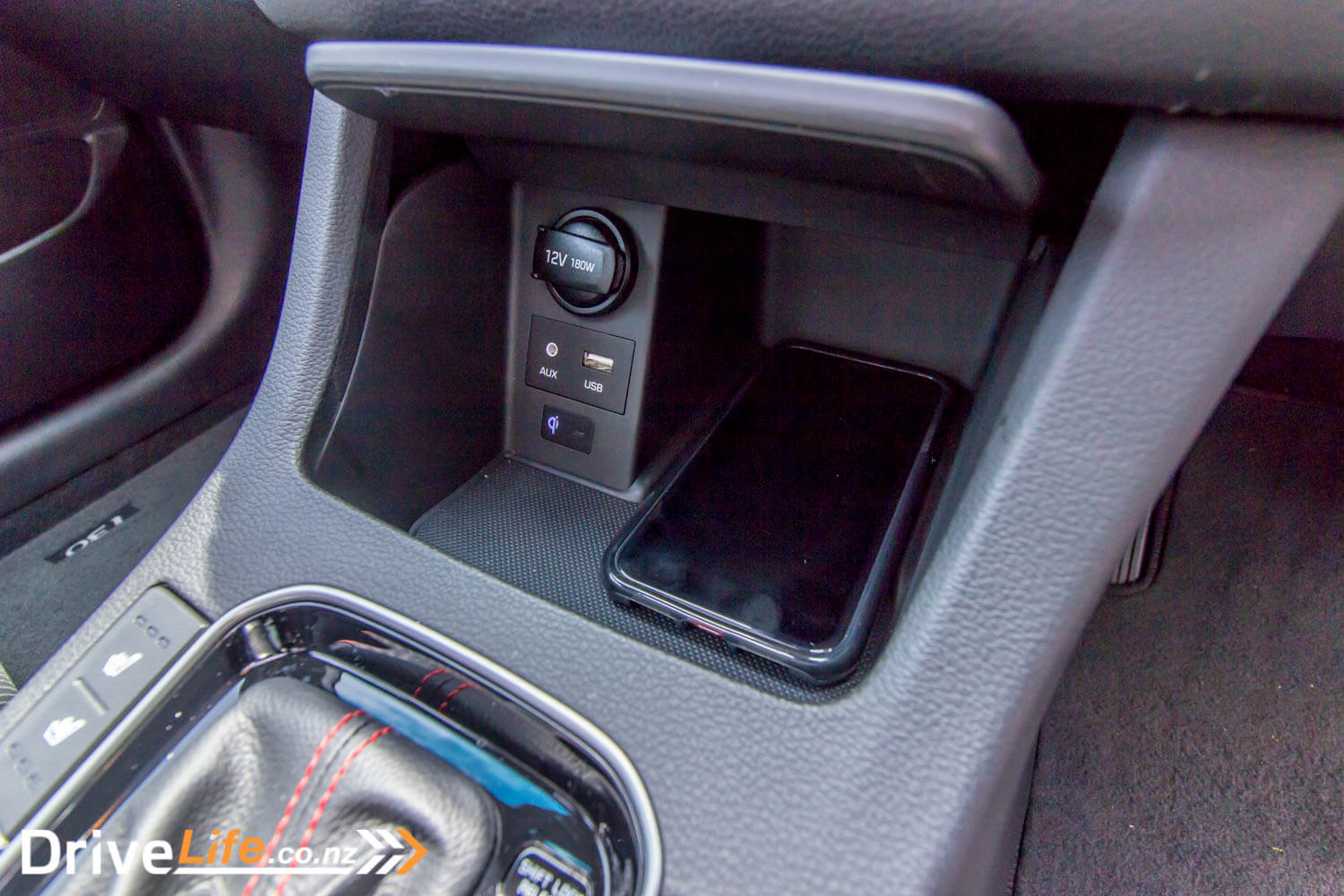
The glovebox is bordering on enormous, for the size of the car. Add in great visibility all round (although there’s no blind spot monitoring), an electric park brake with auto hold, and you have a car that has the potential to be an excellent Daily Driver, with the option of a bit of back-road excitement in its pocket.
The SatNav, true to Hyundai, is well done. On the motorway, it becomes a split-screen, so you get a large, clear, almost 3D image of any motorway interchanges. Of course, instructions are also shown in the driver’s information display. Others do the same sort of thing with SatNav, but Hyundai seems to nail it.
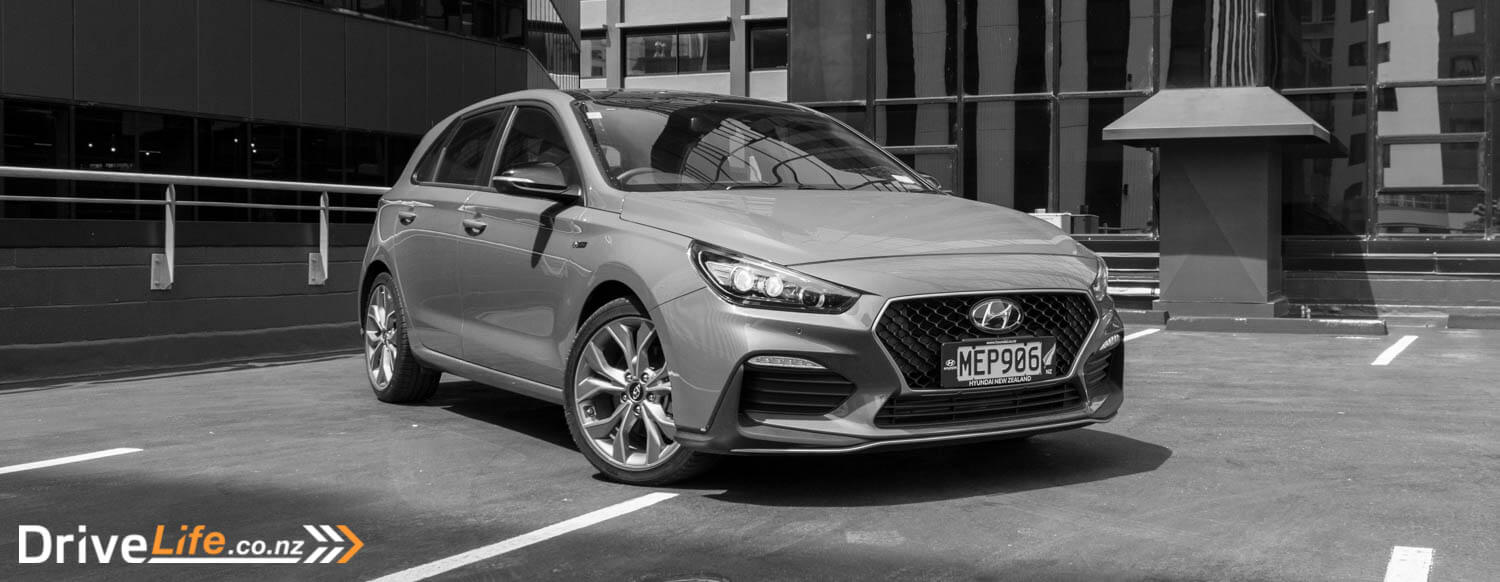
Funnily though, it’s motorway driving where the N-Line seems to excel. With adaptive cruise on and great visibility, it’s well at home on the daily commute. Mid-range performance is excellent, and punching the gas pedal when you need to on the motorway will bring satisfying acceleration. You can even keep the sunroof open on the motorway – buffeting is reduced hugely with the little pop-up wind deflector, much like the Santa Fe we had a few weeks ago. Road and tyre noise are well-damped, there’s some wind noise but on the whole, it’s a refined little car.
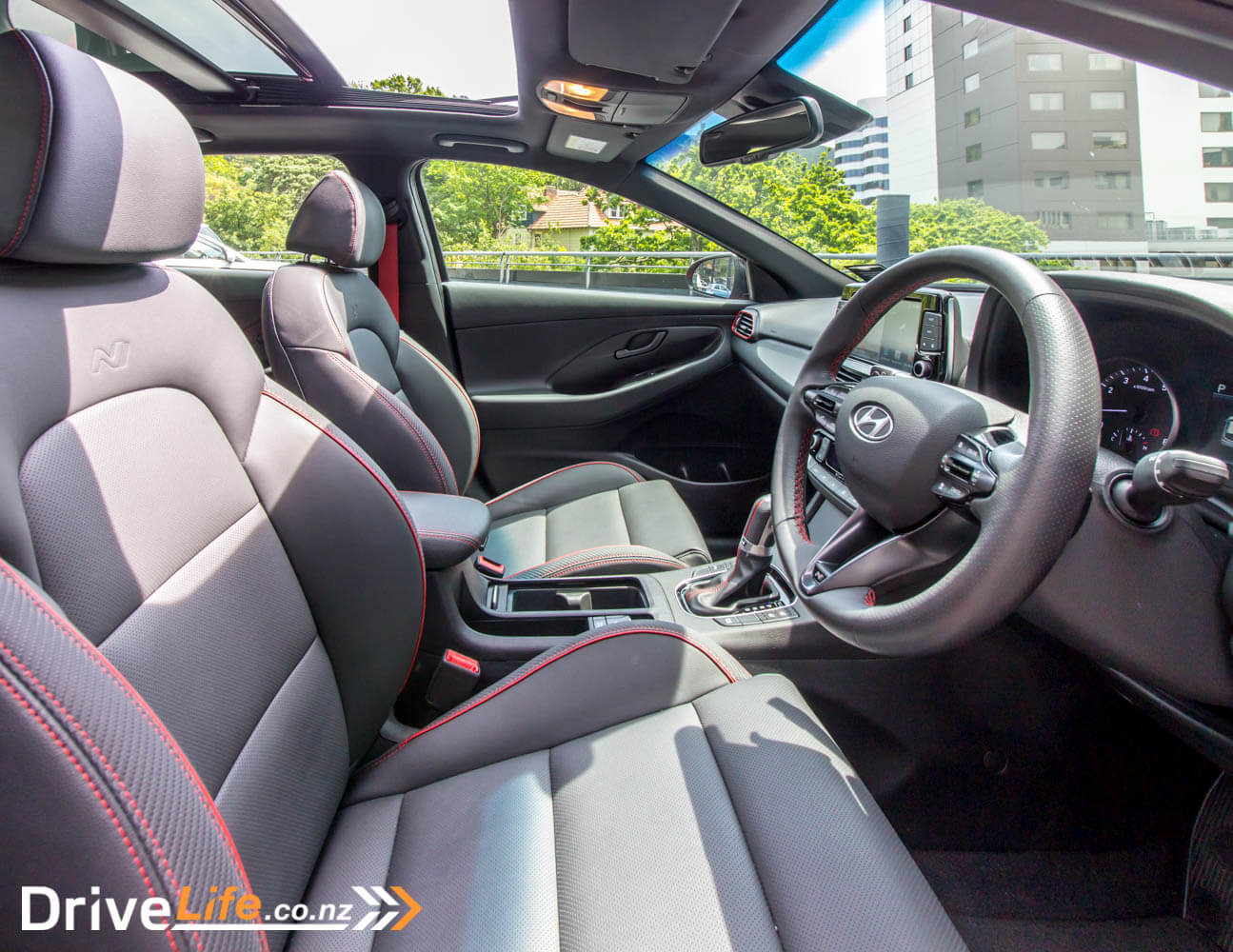
In most ways, anyway. Readers will know my thoughts on CVT gearboxes – I’m not a fan. It was disappointing that the N-Line doesn’t have a manual gearbox option, but at least it’s a 7-speed automatic and not a CVT – but it is a dual-clutch (DSG) gearbox. And unfortunately, that means it’s jerky at low speeds. Pulling up to a Give Way sign and not quite stopping, then accelerating away will see the car think about what gear to go in, then select it, then give you a small shunt as you take off. On my driveway it’s bad too, as the driveway has a slight slope. As I’m waiting for traffic to clear, any touch of the gas pedal will see the car slip the clutch, off and on, while it waits to get moving. It’s the biggest problem with the car, as it makes slow-speed driving a bit painful.
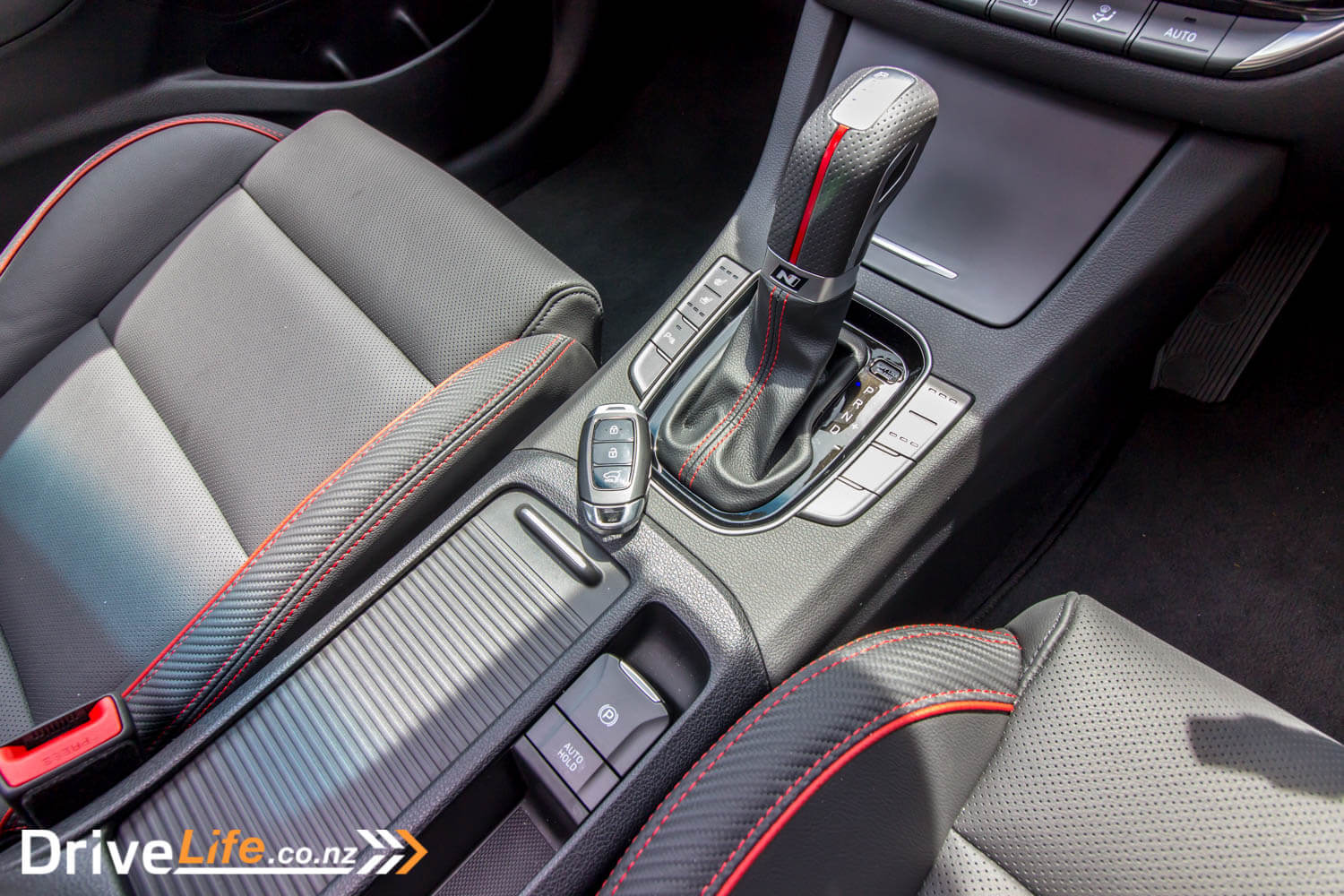
With the DSG, gear changes on the move are generally much faster, and much smoother and it’s the same case with the i30N-Line. It reminded me exactly of the Toyota RAV4 Adventure we recently tested, and behaves exactly the same way.
The ride is mostly good, although it can get jiggly at low speeds. It’s pretty firm overall, but you’ve got to expect that in a car that’s designed as a younger sibling to the i30N.
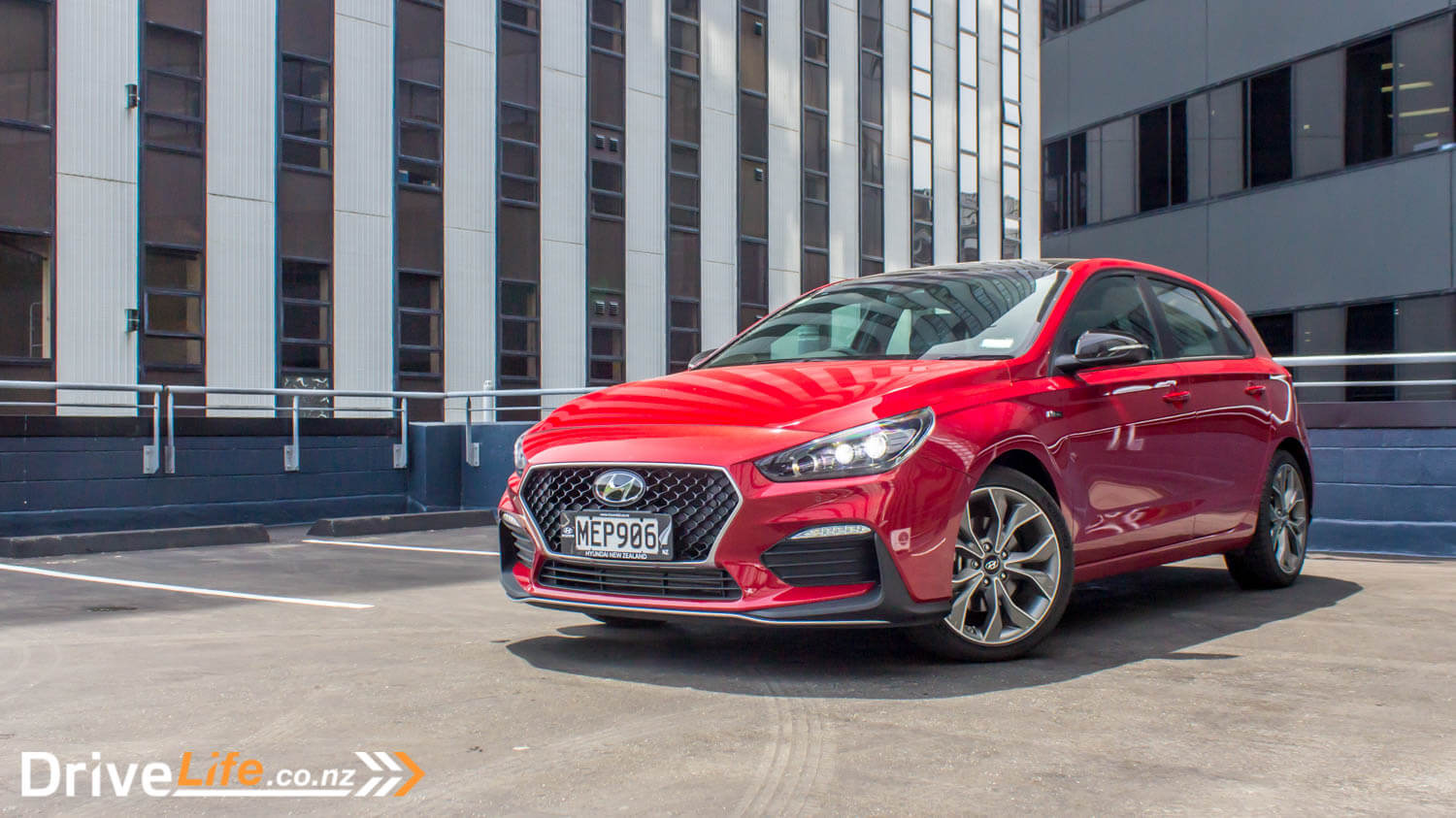
Like the Santa Fe, the steering wheel controls are superb. After thirty minutes of driving, there’s simply no need to look down at the buttons again. Hyundai have really excelled in this part of their cars. Let’s hope they don’t change it. Also like the Santa Fe, if you are approaching a fixed speed camera, you’ll get an audible warning, and a reminder of the current speed limit. It’s little touches like this that make you appreciate a car a bit more.
After nearly a week with the car, I decided it was time to drive it like it was designed, so headed to my Favourite Handling Road to test out the car’s capabilities. I’d taken the i30N on this road too, so it was going to be an interesting comparison.
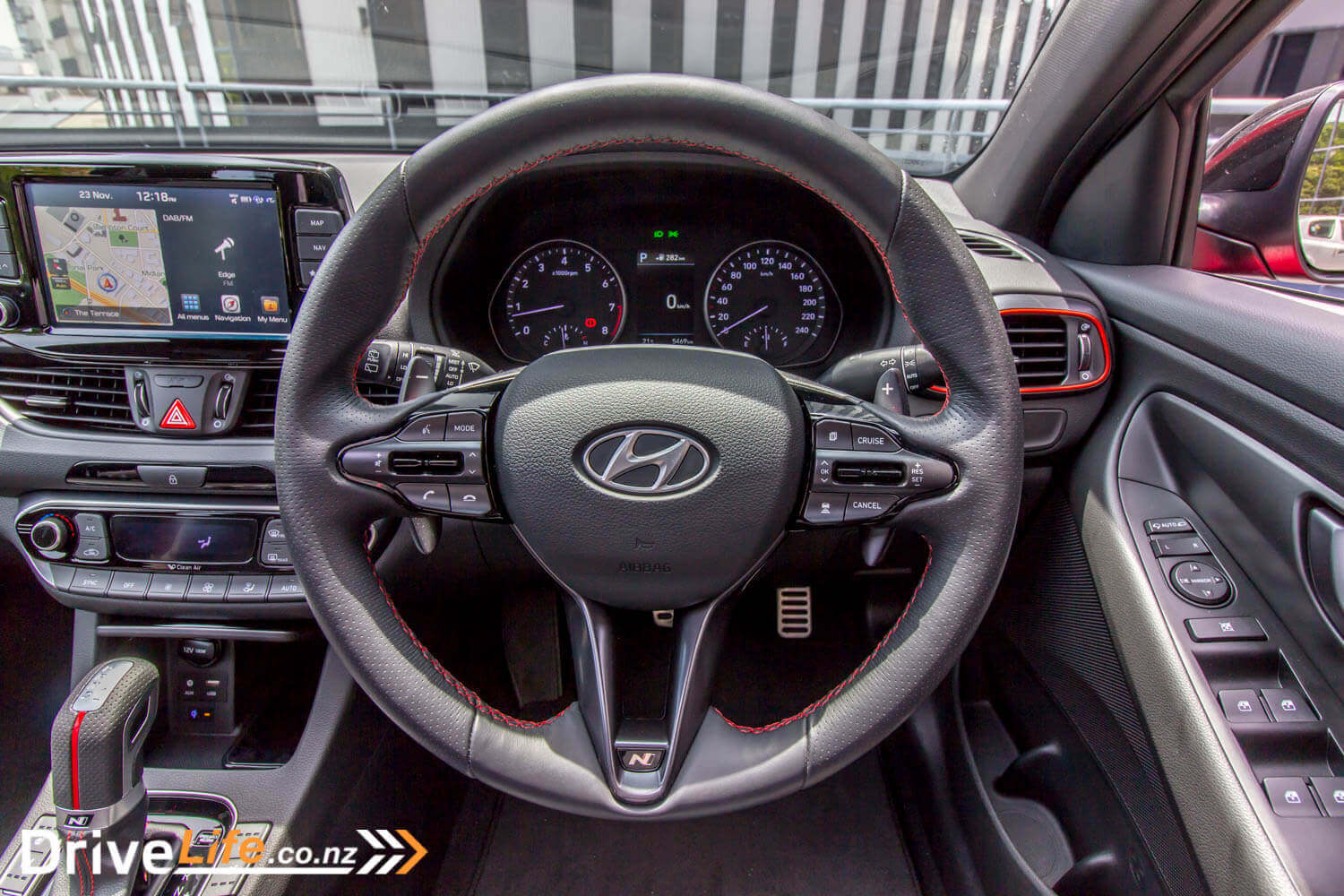
First up, Sport mode on. Instantly the steering got heavier, and not just that – it actually gained feeling. I was suitably impressed, as often when switching a car to Sport mode, the steering gets heavier, and that’s it. So far, so good.
As I started to push the car a bit more, I noticed the side bolsters on the seats. Great around town, but not quite tight enough for spirited driving. But that was about my only complaint when driving the i30N-Line on a twisty road. The brakes – fantastic. The pedal felt a little soft, but the feel coming through them was perfect.
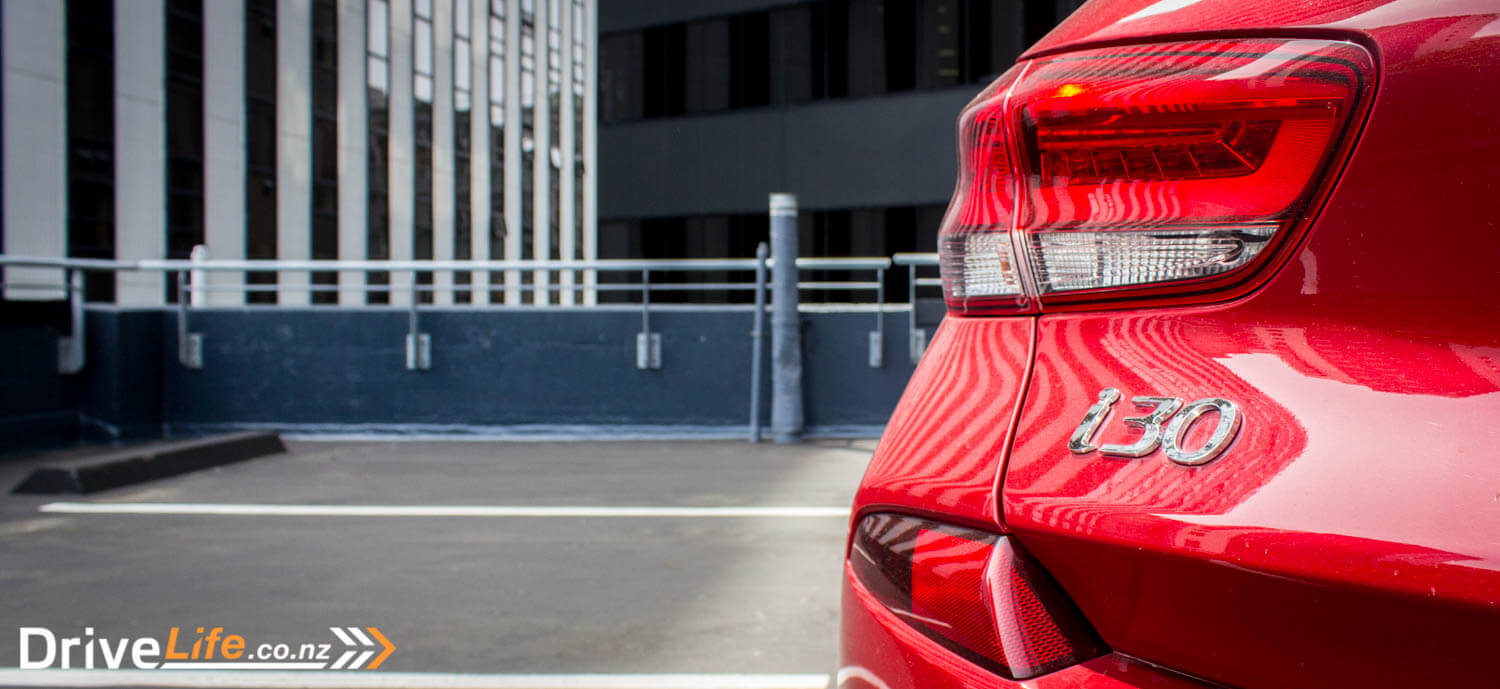
I was really now starting to enjoy this car, and then I opened the sunroof and windows. It may sound like a sewing machine on the inside when it’s closed up, but the sound coming through from the exhaust was spot on, with an almost baritone note from the exhaust hitting my ears. No crackling and popping like the i30N, but much nicer than with all the windows up.
There’s more body roll than I had expected, but I was pushing on a bit on this road. Tight corners will see the inside front wheel spin, but it’s all manageable and, well, fun. The torque of the engine helped lots on this road; I could simply leave it in third gear, and just run the car between 3,000 and 7,000 rpm, and let the torque do the work.
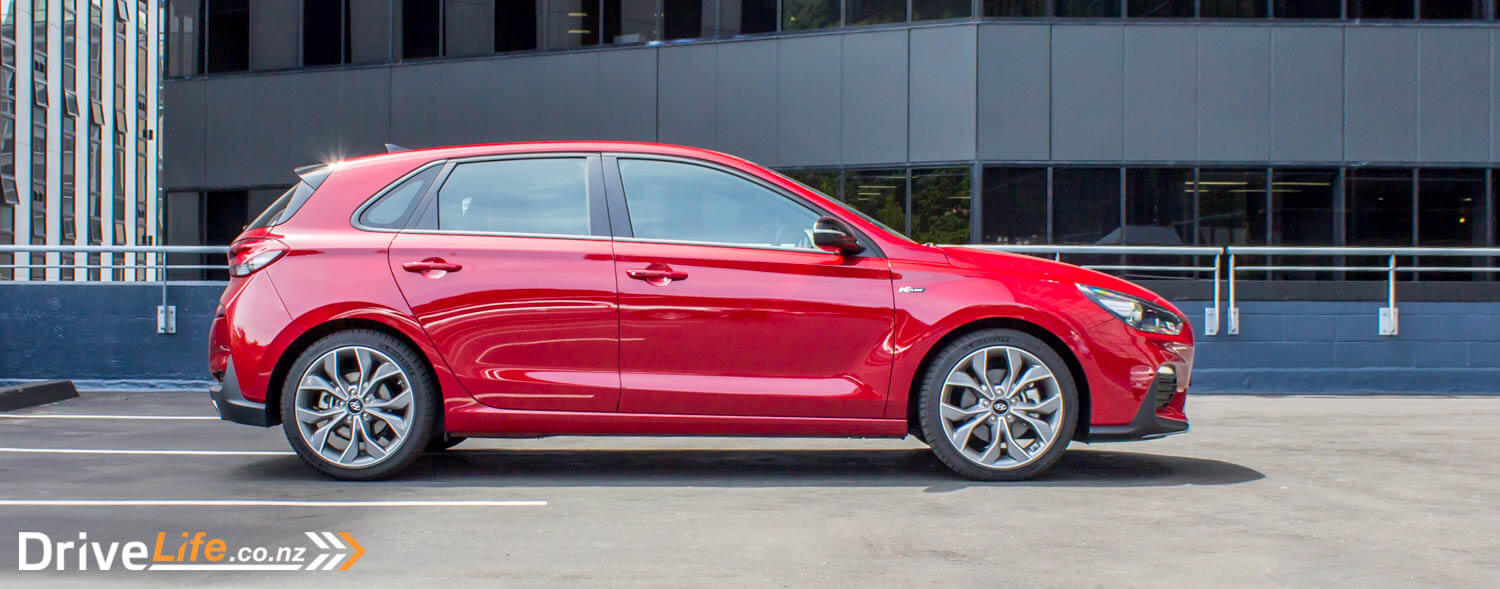
Even the gearbox, not nice at low speeds, starts to work its magic, with nice snappy changes, and rev-matching on the downshift. It can be a little jerky when you upshift at 7,000rpm, but that’s to be expected.
For a front-wheel-drive car, it’s a lot of fun, and has an extremely capable chassis. Turn in is excellent – it was hard to fault it, other than the body roll, which in all honesty is not that bad. All the time on that road, it reminded me of the Suzuki Swift Sport, and that’s no bad thing. I pulled over to take some notes, and the smell of brakes wafted in through the open windows. I wrote in my notes, “it picks up and goes”. There is a whole lot of acceleration to be had from a car this size with 150kW on tap. Compare this to the 104kW Swift Sport – that’s a huge difference. It’s no 202kW i30N, but hey, it’s still a grin-maker.
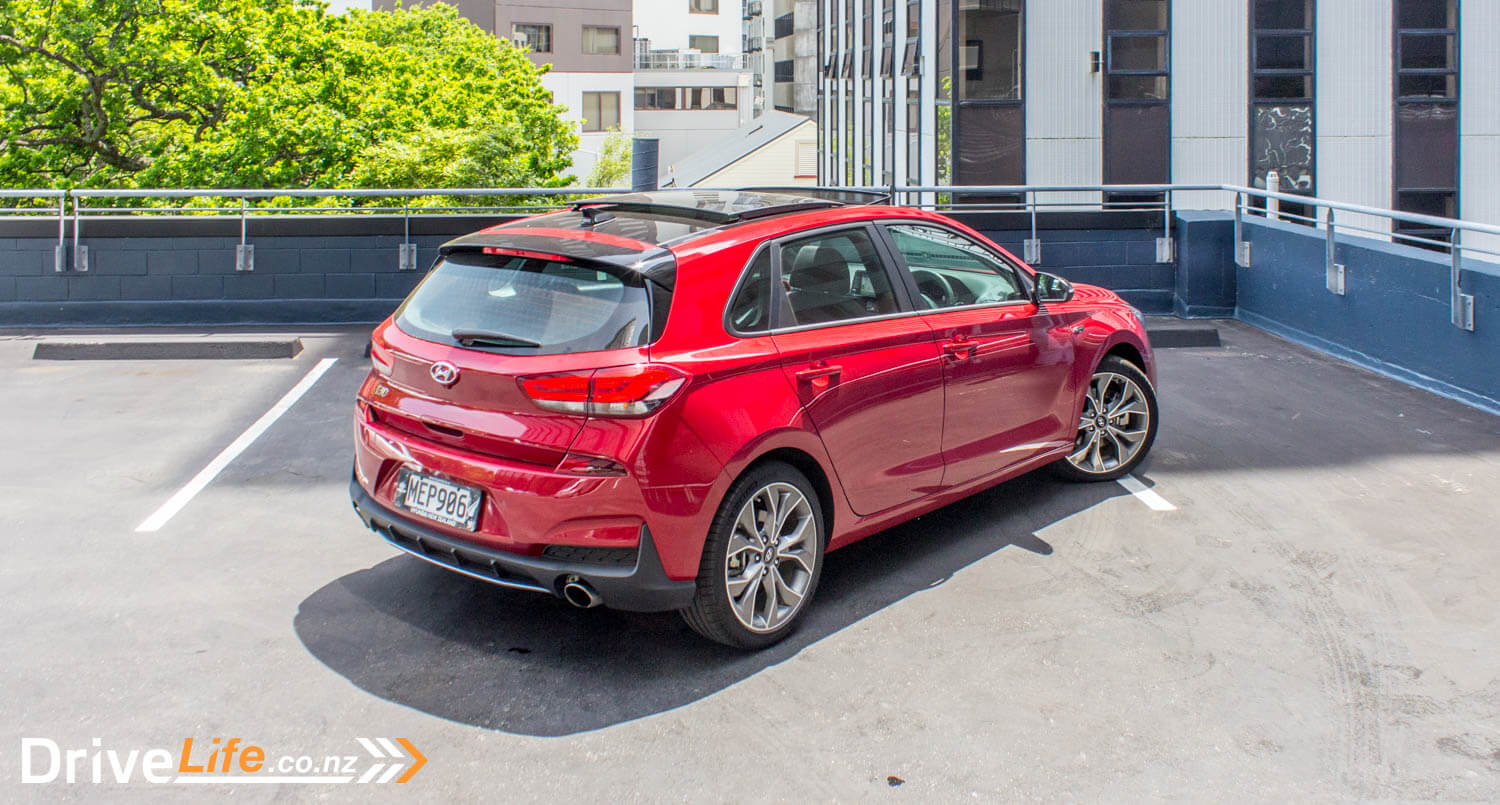
You would think that like the i30N, full-throttle acceleration with 50kW less is still going to lead to lots of wheel spin and axle tramp. Surprisingly, it doesn’t. From a standstill, there’s some spinning at the front but it only lasts a second, and then you’re off. It’s far better than the i30N and miles better than the Honda Civic Type R. One thing it does give you on full throttle acceleration is that lovely exhaust note – if the windows are down.
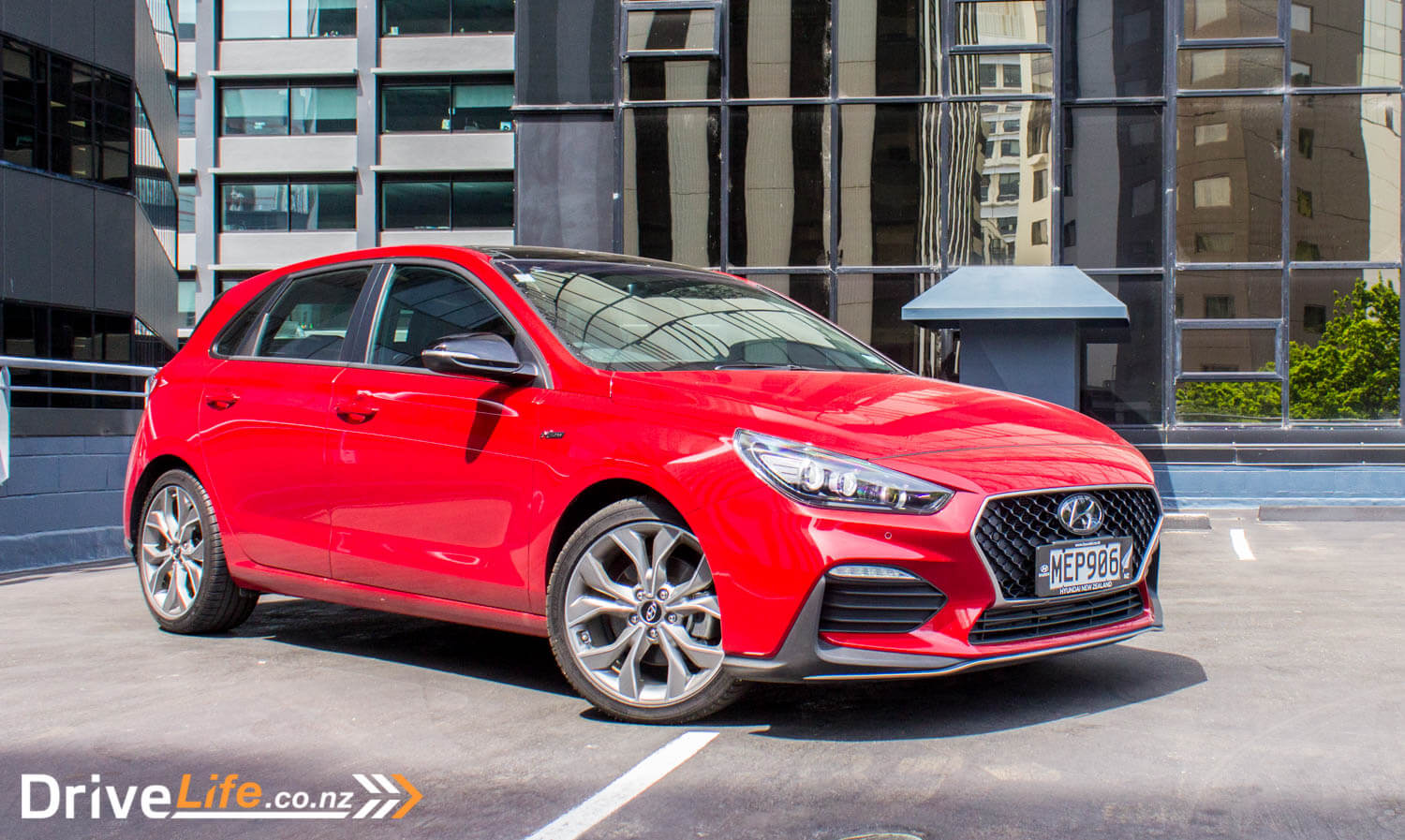
Fuel economy? A reasonable 8.4, over 500km of mixed driving. It’s a bit high for a 1.6-litre car, but for one with 150kW, it’s about spot on.
In the interests of complete transparency, I did have a mechanical issue with the car. At one point in my week, performance dropped off radically, and every time the turbo spooled up there was a wooshing noise that shouldn’t have been there. A trip to the Hyundai dealer, and it was sorted in ten minutes – a hose clamp had come loose, and a pipe had fallen off the turbo. Unusual for us to strike any problem in a new car, and this surely was a one-off.
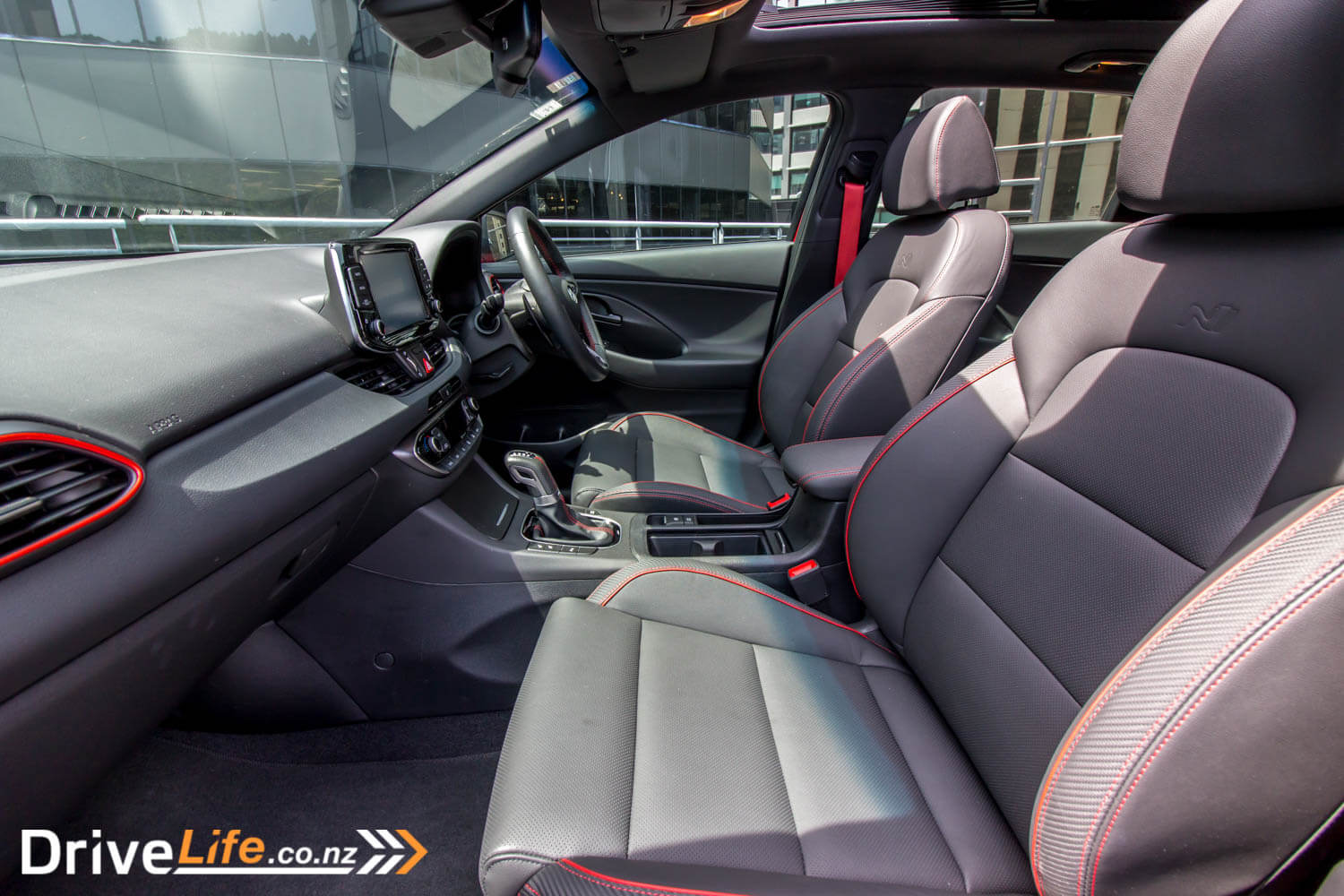
What’s The Competition For The 2019 Hyundai i30N-Line?
| Brand/Model | Engine | Power/ Torque kW/Nm | Cargo capacity, litres | 0-100km/h, seconds | Fuel L/100km | Price |
| Mini Clubman Cooper S | 2.0-litre, 4-cylinder turbo | 141/280 | 405 | 7.3 | 7.1 | $51,990 |
| Alfa Romeo Giulietta Veloce Hatchback | 1.7-litre, 4-cylinder turbo | 177/340 | 350 | 6.0 | 6.8 | $49,990 |
| Peugeot 308 GT Hatchback | 1.6-litre, 4-cylinder turbo | 165/300 | 435 | 7.4 | 5.7 | $46,990 |
| Volkwagen Golf TSI R-Line | 1.4-litre, 4-cylinder turbo | 110/250 | 341 | 8.2 | 5.2 | $44,490 |
| Hyundai i30N-Line | 1.6-litre, 4-cylinder turbo | 150/265 | 395 | 7.2 | 7.5 | $43,990 |
| Honda Civic RS Sport Turbo | 1.5-litre, 4-cylinder turbo | 127/220 | 414 | NA | 6.0 | $40,990 |
| Holden Astra RS-V | 1.6-litre, 4-cylinder turbo | 147/280 | 360 | 8.2 | 6.3 | $38,490 |
| Ford Focus ST Line | 1.5-litre, 4-cylinder turbo | 134/240 | 443 | 7.8 | 5.9 | $36,990 |
| Suzuki Swift Sport | 1.4-litre, 4-cylinder turbo | 130/203 | 265 | 8.0 | 6.1 | $29,990 |
What’s The Pros and Cons For The 2019 Hyundai i30N-Line?
| Pros | Cons |
| Engine smoothness, quietness Steering feel in Sport mode Steering wheel controls Engine noise in Sport mode Rear legroom Chassis brilliance Performance | Jerky gearbox at low speeds Price Engine noise when not in Sport mode |
What’s The Verdict For The 2019 Hyundai i30N-Line?
I was pretty unsure about the N-Line before I picked it up. After the I30N and all it is, would anything else trying to be an N be a waste of time?
The i30N-Line is no waste of time; it’s a fun car, has a great chassis and looks brilliant. Generally, I loved driving it.
Are you waiting for the ‘but…’?
But, there’s a few things I’m struggling with. The DSG gearbox is no fun at low speeds, and causes your passengers to think you are a rookie driver. Number two has to be the price. For another six grand, I can have a Giulietta?
For an amazing $14,000 less, the Suzuki Swift will always be there, nipping at the heels of the i30N-Line like a little terrier, trying to be noticed. Hell, the Swift Sport nips at the heels of pretty much anything.
So should you buy one? I would. Even with the gearbox, this is a whole lot of fun in an attractive design, well finished and is spacious for what it is. Would I buy one over a Suzuki Swift Sport? That’s a harder question. The Suzuki, with almost 50Kw less power, weighs around 400kg less, and that’s a huge amount of weight. That makes the Swift Sport more fun, and it’s so much cheaper. Tough call, and one I’m glad I’m not making.

2019 Hyundai i30N-Line – Specifications
4.0 Chevrons
| Vehicle Type | Small, 5-door performance hatchback |
| Starting Price | $43,990 |
| Price as Tested | $43,990 |
| Engine | 1.6 litre 16 valve twin overhead cam with gasoline direct fuel injection with VGT (Variable Geometry Turbo) |
| Transmission | 7-speed, dual-clutch automatic |
| Power, Torque kW/Nm | 150/265 |
| Spare Wheel | Space saver |
| Kerb Weight, Kg | 1,344 |
| Length x Width x Height, mm | 4340x1795x1455 |
| Cargo Capacity, litres | 395/1301 |
| Fuel Economy, L/100km | Advertised Spec – combined – 7.5 Real World Test – combined – 8.4 Low Usage: 0-6 / Medium Usage 6-12 / High Usage 12+ |
| Fuel tank capacity, litres | 50 |
| Towing Capacity Kg, unbraked/braked | 600/1300 |
| Turning circle, metres | NA Small: 6-10m / Medium 10-12m / Large 12m+ |
| Warranty | 3 years, 100,00kilometres 3 years Roadside Assistance |
| ANCAP Safety Ratings | 5 Star |
